-
EU ministers gather in Lviv — pledge 1 billion euros for military industry, back tribunal for Russian war crimes
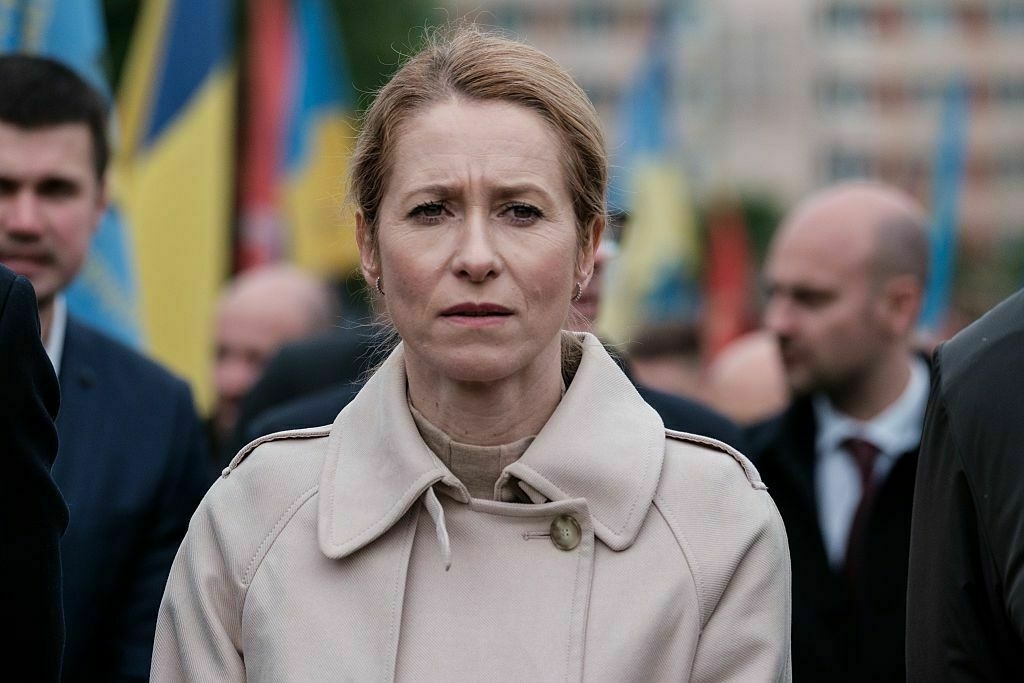
LVIV — On Europe Day, as tanks rolled through Moscow’s Red Square in a show of force with many foreign leaders aligned with Russia joining, European foreign ministers gathered in Lviv to deliver a different message — in their own words one of solidarity, justice, and long-term military partnership with Ukraine as stated by many of the almost 20 European foreign ministers during the Lviv meeting.
Ukrainian officials, including Foreign Minister Andrii Sybiha, Prime Minister Denys Shmyhal, and the EU’s top diplomats, signed a landmark agreement to bolster Ukraine’s defense industry and committed to advancing a special tribunal for Russian war crimes in Ukraine.
The approval marks a key step in international efforts to hold Moscow accountable for what is considered the gravest violation of international law committed against Ukraine.
“This is a concrete step to help Ukraine not only defend itself today, but build long-term resilience,” said the EU Foreign Affairs Chief Kaja Kallas.
The agreement, backed by 1 billion euros sourced from the windfall profits of frozen Russian assets, is designed to facilitate joint production and procurement of military equipment.
Since the start of Russia’s full-scale invasion in 2022, Western countries have frozen approximately $300 billion in Russian sovereign assets. In October 2024, the Group of Seven (G7) approved nearly $50 billion in loans for Ukraine, to be repaid with proceeds from these frozen assets.
Russian regime’s legitimacy rests on the manipulation of historyWorld War II was a bloodbath of unspeakable proportions, planned and executed by totalitarian powers. It brought the catastrophe of the Holocaust. It also led to the division of Europe and loss of freedom of many nations in Europe, including my own. Today, at the time of commemoration of 80 years since the end of World War II, Russia is singularly responsible for launching the most devastating war in Europe since 1945. Three years into the full-scale war, Russia has failed to achieve its war ai The Kyiv IndependentBaiba Braze
The Kyiv IndependentBaiba Braze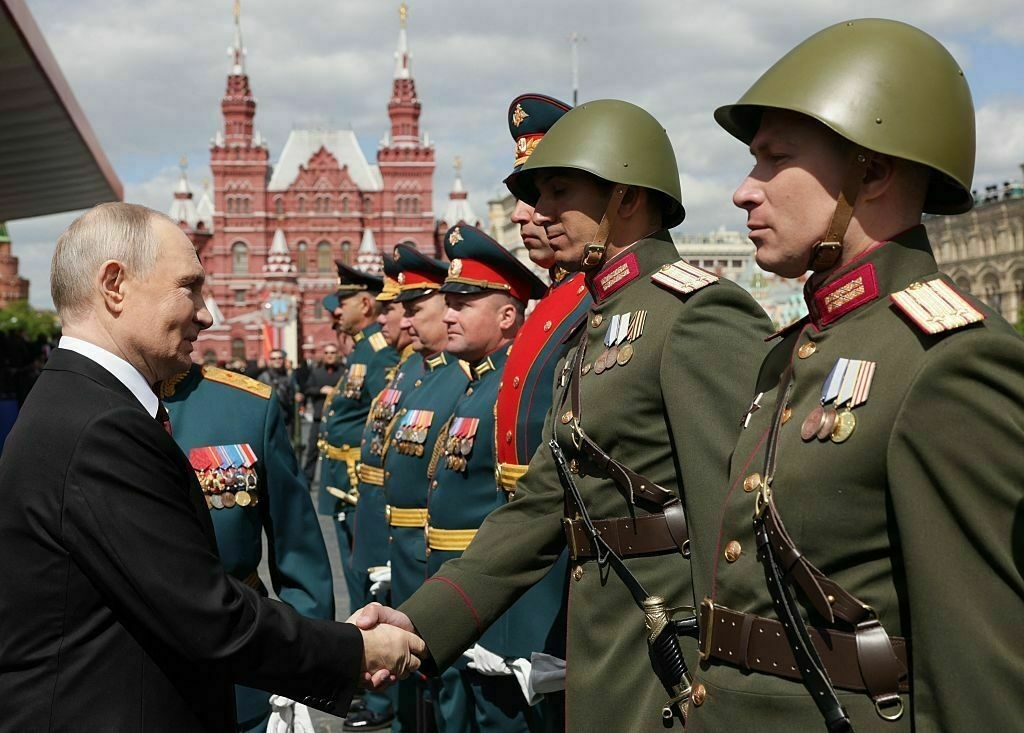
Tribunal talks become solidDuring the visit, ministers convened a session of the international coalition pushing for a special war tribunal to prosecute Russia’s top leadership for its full-scale invasion of Ukraine.
While the International Criminal Court (ICC) has issued arrest warrants for a number of Russian officials over war crimes, it lacks jurisdiction to prosecute the crime of aggression against a non-signatory like Russia — a legal gap the new tribunal seeks to close.
“It’s a breakthrough, because even (Vladimir) Putin can be tried now,” one diplomat told the Kyiv Independent.
President Volodymyr Zelensky has consistently pushed for the creation of a special tribunal to hold Russian leaders, including President Vladimir Putin, accountable for launching the full-scale invasion.
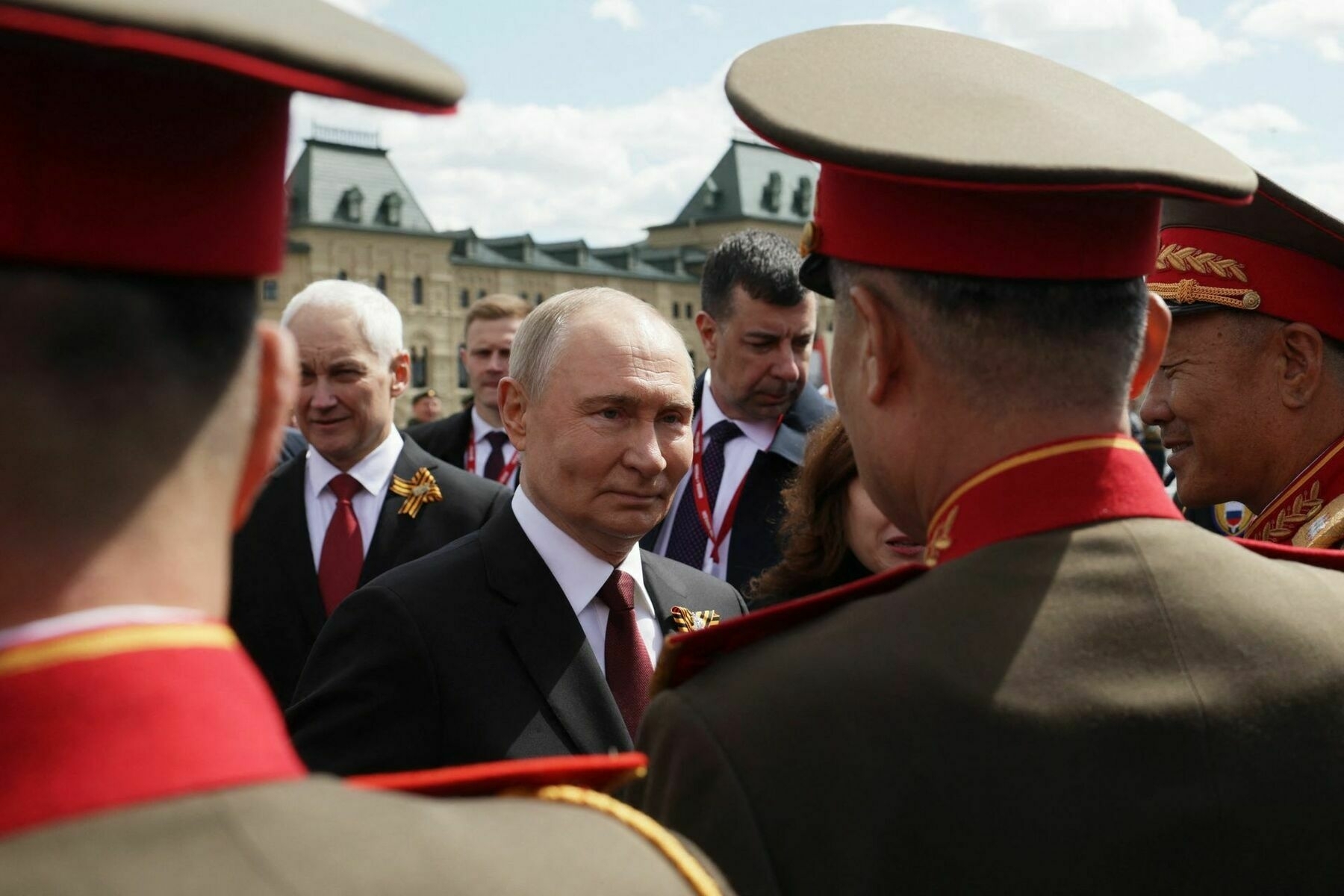
Russia’s President Vladimir Putin (C) meets with North Korean servicemen on Red Square after the Victory Day military parade in central Moscow on May 9, 2025. ( Gavriil Grigorov/POOL/AFP via Getty Images) Ukrainian authorities have documented thousands of war crimes, including targeted attacks on civilians, medical facilities, and cultural heritage sites, as well as widespread torture and forced deportations.
The day began with ministers paying tribute to fallen Ukrainian soldiers at Lychakiv Cemetery before proceeding to Lviv City Hall, where a minute of silence was held.
As Ukraine braces for a continued war with Russia, the commitments made in Lviv may mark a turning point in Europe’s strategy toward the Russian invasion of the country.
A Divided Europe: Criticism of Fico’s Moscow VisitThe timing of the Lviv summit offered a clear contrast to the parade in Moscow, where Slovak Prime Minister Robert Fico appeared alongside Putin at the annual Victory Day parade. His presence drew sharp criticism from multiple EU leaders.
“Fico stands shoulder to shoulder with the man who started this war,” said Kallas. “It’s incomprehensible. You stand on the wrong side of history,” Kallas told the press during the summit.
Fico’s friendly stance toward the Kremlin, including controversial meetings with Putin, has drawn condemnation from European leaders.
Czech Foreign Minister Jan Lipavsky added a pointed remark: “I’m glad no Czech official stood in Red Square today. We must stand with Ukraine — not lend credibility to Russian propaganda.”
Polish Foreign Minister Radoslaw Sikorski quipped, “Wasn’t he supposed to be sick?” — referencing Fico’s earlier claim he would skip Moscow due to illness.
‘The front is noisy’ — for Ukraine’s soldiers, Russia’s Victory Day ‘ceasefire’ is yet another shamMoscow’s self-declared truce which came into force at midnight on May 8 is not being felt on the front lines, Ukrainian soldiers have told the Kyiv Independent, reporting numerous cases of Russian military activity throughout the day. “There is no truce. There is shelling, artillery, drone and FPV (bomb) drops,” Petro Kuzyk, a battalion commander at the National Guard, said. The Kremlin announced the measure on April 28, claiming all military actions would halt on May 8 to midnight on May 11 t The Kyiv IndependentChris York,
The Kyiv IndependentChris York,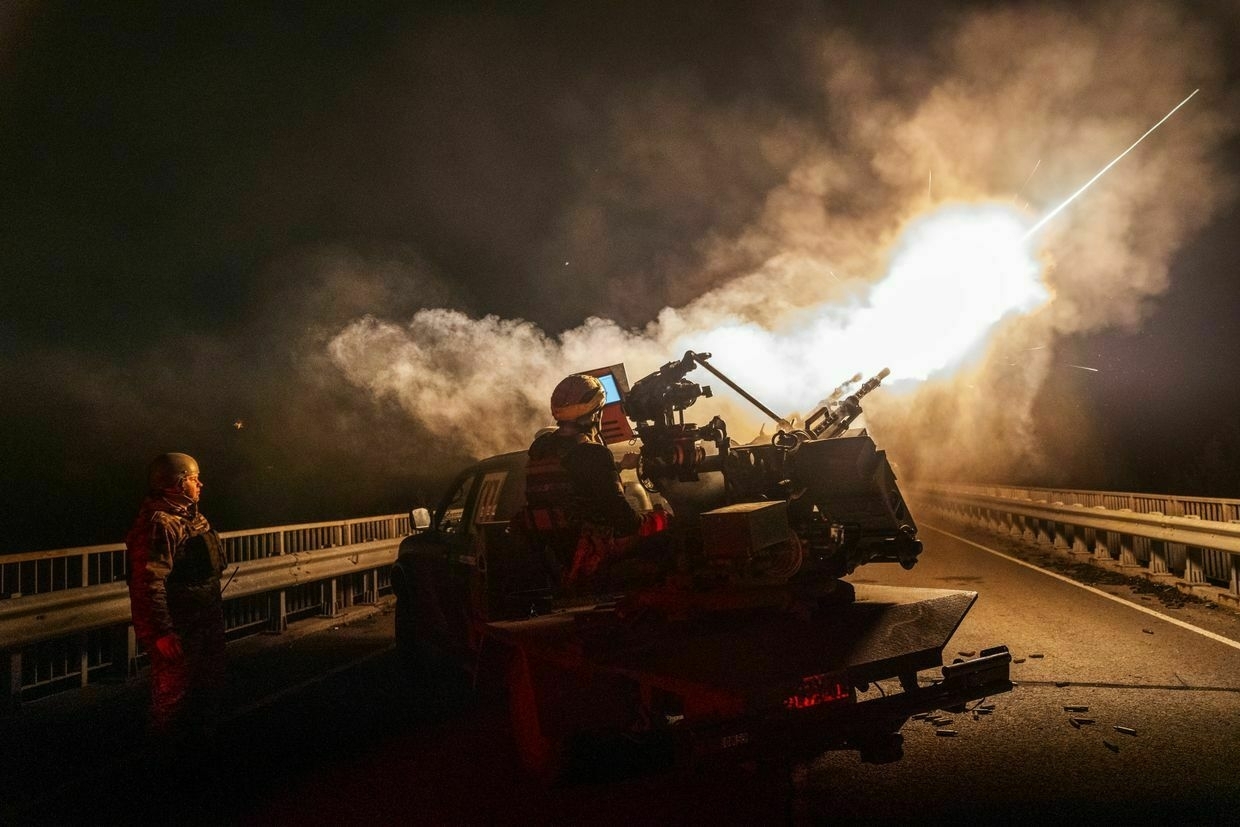
-
Why Ukraine remains dependent on US Patriot missiles
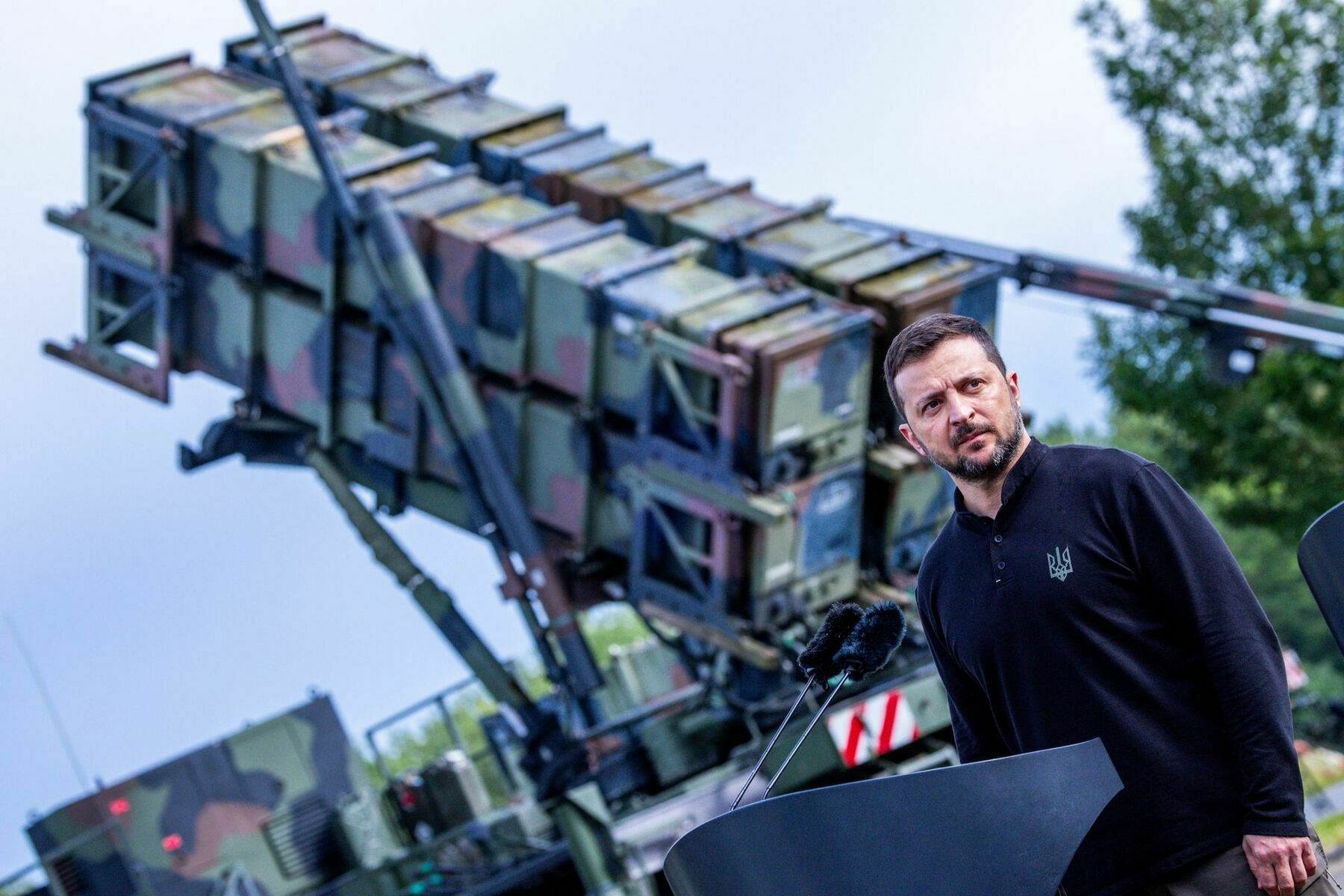
A series of Russian ballistic missile attacks on Ukrainian cities have killed dozens of civilians in recent weeks, shaking an already uneasy sense of safety for Ukrainians living far from the front lines.
The Russian strikes are growing more lethal as foreign air defense aid to Ukraine has dwindled, particularly deliveries of Patriot missiles. Ukraine is left struggling to cover the shortfall.
Ukraine’s ability to shoot down inbound Russian drones and cruise missiles has grown enormously since Russia’s full-scale invasion. But despite ingenuity in domestic weapon production over the past three years, Ukraine has no homemade equivalent to the Patriot, a U.S.-made surface-to-air missile system whose latest iterations are uniquely good at stopping ballistic missiles in flight.
Ukraine’s local missile makers are working through a long list of demands on their production, while also finding their factories under frequent Russian aerial strikes. Before February 2022, Ukrainian aerospace engineers were reconfiguring their leftover Soviet air defense batteries for the next generation of threats. Like the stocks of Patriot missiles, those systems are also running low on ammunition, and their designers are prioritizing building cruise and ballistic missiles over anti-ballistic air defense missiles.
Ukraine is consequently unlikely to field strong anti-ballistic missile defenses of its own any time soon. The only near-term solution to Russia’s increasingly aggressive ballistic attacks remains the delivery of more Patriot missiles from allied nations.
Renewed Russian strikes and reduced Ukrainian defenseBallistic missiles are among the toughest challenges that any air defense system faces. They fly in high parabolas far from the Earth’s surface, coming down at several times the speed of sound to strike their targets.
Intercepting ballistic missiles in their flight paths requires precision both in detection of incoming missiles and in the launch and targeting of outgoing air defense missiles. Cruise missiles and drones fly slower and nearer to the ground, giving ground-based air defense more time to hit them out of the sky.
“There’s a big difference between ballistic missile defense and missile defense targeted at air-breathing threats like drones and cruise missiles,” said Fabian Hoffmann, a missile specialist at the Oslo Nuclear Project. “Airbreathing” refers to aircraft with jet engines that take in oxygen as they fly at relatively low altitudes. “For ballistic missile defense, there simply is no shortcut.“
Much of the weaponry American arms makers have sent to Ukraine has fallen short on the battlefield. Missile defense systems are a major exception, particularly when it comes to fending off ballistic threats like Russian Kinzhals and Iskanders.
“The Americans mastered that technology because they had to,” said Hoffmann. “The U.S., after the Cold War, operated under the assumption that it would always have air dominance near where it fought. That means the only credible airborne threat you really have to worry about is standoff munitions like ballistic and cruise missiles.”
Under President Donald Trump, the U.S. has slowed down air defense aid to Ukraine. The last major shipment of Patriot equipment was the week following Trump’s inauguration — 90 missiles redirected from Israel. Another Patriot system from Israel is currently being refurbished after almost a year of back-and-forth, but U.S. standards of “refurbishment” have famously held up much simpler deliveries like armored vehicles for months.
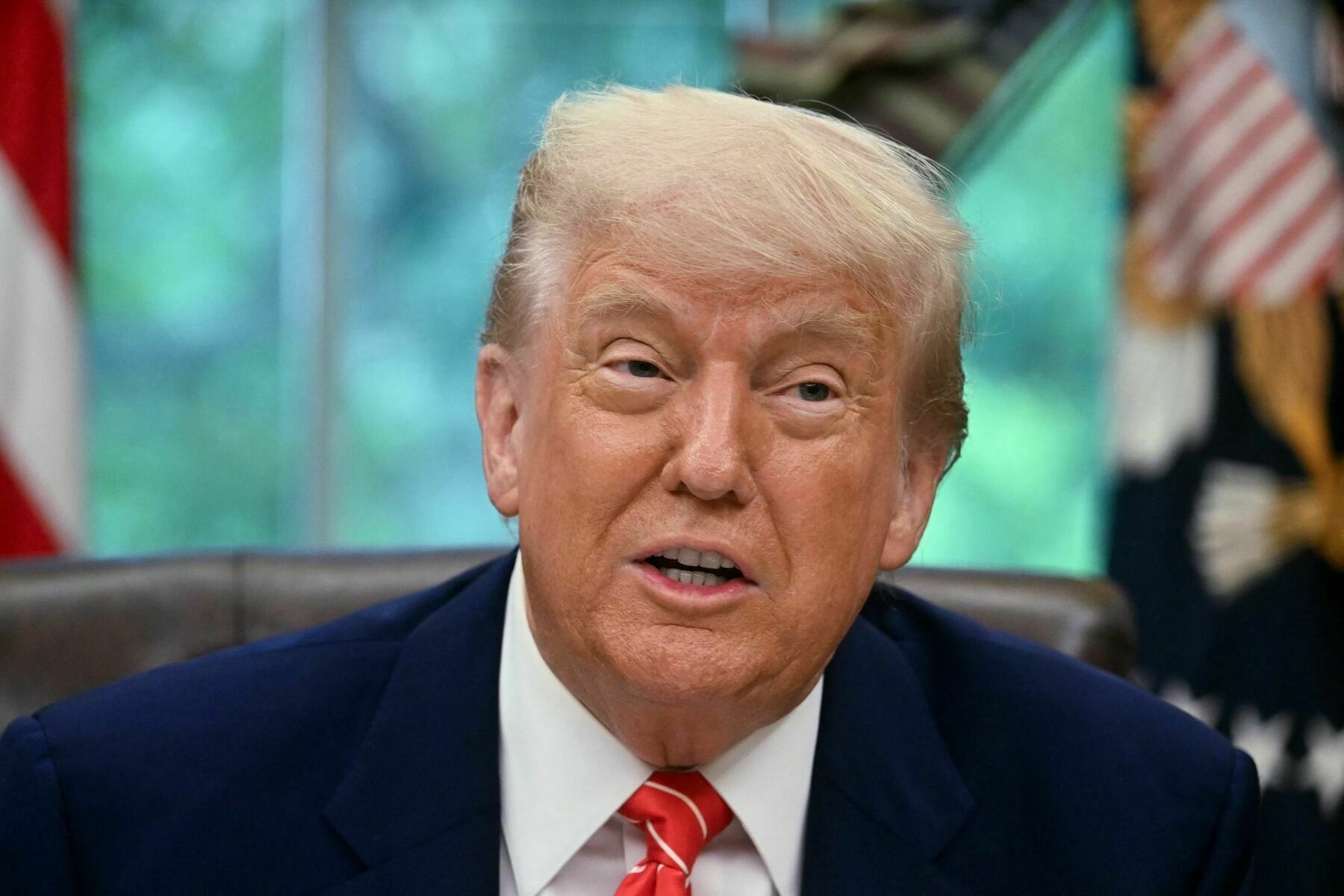
U.S. President Donald Trump in the Oval Office of the White House in Washington, D.C., on May 8, 2025. (Jim Watson / AFP via Getty Images) 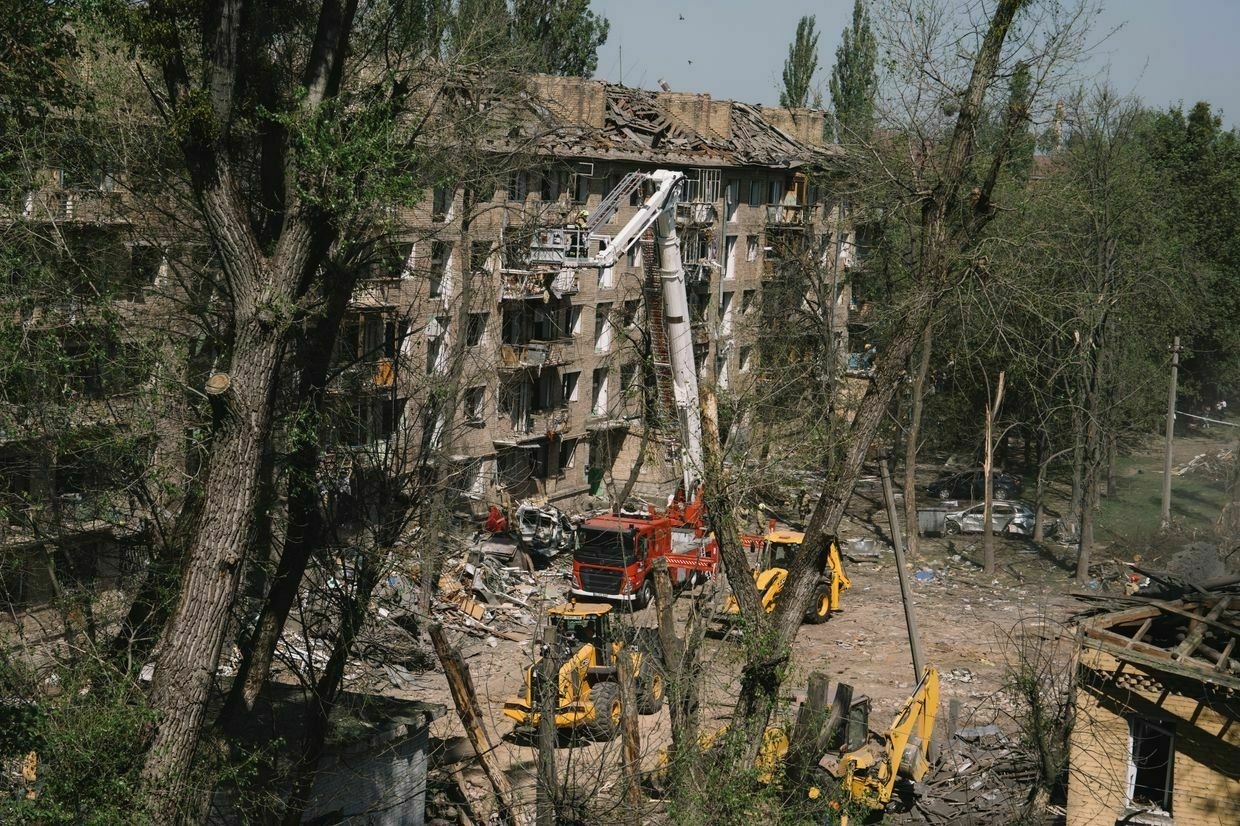
Rescue workers operate at the site of a Russian missile attack in Kyiv, Ukraine, on April 24, 2025. (Andrew Kravchenko / Bloomberg via Getty Images) Ukraine guards details about its missile programs in general and air defenses in particular extremely closely. But by the figures available, the situation is growing dire.
NATO Secretary General Mark Rutte lamented that almost all the Patriots promised to Ukraine were already there as of the middle of April.
The Defense Department declined to provide specifics as to remaining Patriot deliveries. A spokesperson told the Kyiv Independent that “the Defense Department continues to provide equipment to Ukraine from previously authorized PDA and USAI packages.”
EU countries that had previously shared their Patriots more generously with Ukraine have run through much of their own stockpiles and are now buying up new missiles.
Russia has at the same time radically stepped up its own ballistic missile production. While Ukraine claimed Russia was running out of Iskanders early in the war, production has rebounded to “between 40 and 50 Iskanders per month,” Andriy Yusov, a representative of Ukraine’s Main Intelligence Directorate, said in December. Russia is launching more of those Iskanders as Ukraine has gotten worse at deflecting them.
The numbers reported by the Ukrainian Air Force show a major drop off in the effectiveness of air defense against ballistic missiles in recent months. They tally a total of 22 ballistic missiles fired at Ukraine throughout April, mostly Iskanders. The Air Force reported that air defenses shot down eight, seven of which were in a mass attack on Kyiv, the best-defended city in the country. That attack still saw four missiles touch down, killing 12 civilians and injuring another 87.
Other Russian attacks used Iskanders with cluster munitions to kill 20 in Kryvyi Rih on April 4 and 34 in Sumy on April 13. Another strike on Kyiv killed two and injured eight on the night of May 6. The new vulnerability is acutely felt among Ukrainians who had previously relied on stronger protections in cities far from the front.
What Ukraine has and what it needsUkraine is working to shield itself from the increasingly brazen Russian strikes on civilians. President Zelensky is haggling for Patriot systems with money he doesn’t have. Ukraine also cannot bootstrap a modern Patriot system or PAC-3 missiles of its own at home.
“Developing SAM (surface-to-air) systems is expensive and time-consuming,” says Michael Duitsman, a missile expert at the Middlebury Institute’s James Martin Center for Non-Proliferation Studies.
“SAMs are a system of systems — missiles, launchers, radars, computers, software, user interfaces, etc. Each of those components needs to be developed, prototyped, and tested, and all of them must mesh together and perform reliably against hostile forces in adverse conditions. This can involve years of testing and debugging.”
Domestic Ukrainian air defense is dominated by leftover Soviet SAM missile launchers, especially S-200s and S-300s.
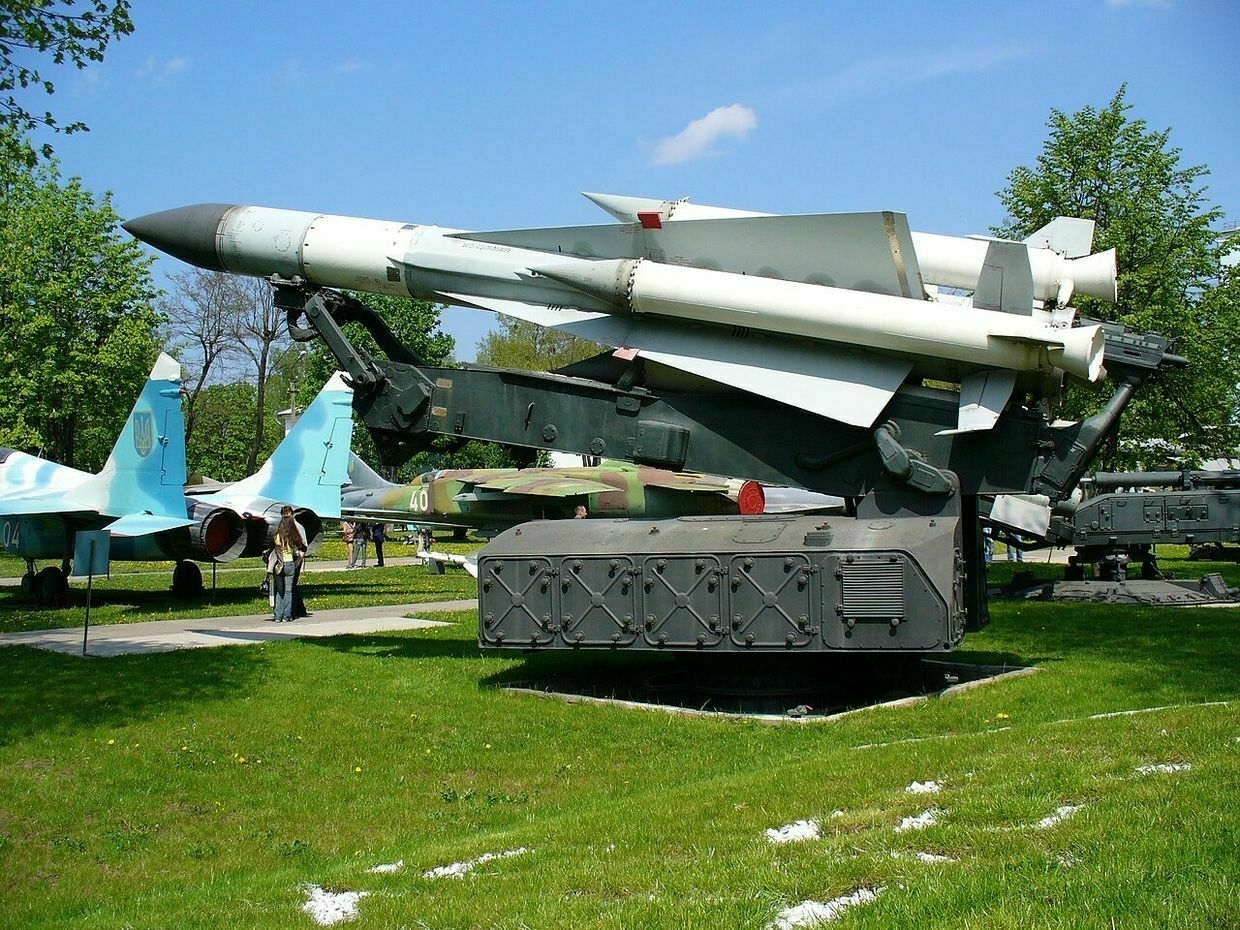
An S-200V launcher at the Military History Museum of the Air Forces of the Armed Forces of Ukraine in Vinnytsia, Ukraine. (George Chernilevsky / Wikipedia) Post-Soviet Russia upgraded the S-300s to S-400s, which are supposedly better at shooting down ballistic missiles. But an S-500 that, as proposed, more closely resembles the newest Patriots has remained under development for years. Chief of the General Staff of Russia’s Armed Forces Valeriy Gerasimov announced the first S-500 division in December. The only known footage emerged days later.
Ukraine was already at work on an S-300 upgrade of its own called the SD-300 before the war. Per a since-removed 2021 flyer from Design Bureau Luch, the envisioned system still had a warhead, meaning it still relies on fragmentary explosions that the newest and best anti-ballistic defenses have moved away from.
The physical hardware of these anti-ballistic missiles takes years to build out. But improvements in software, particularly in algorithms predicting the trajectory of incoming ballistic attacks, would be a cheaper way of boosting S-300 effectiveness, as would more imports of advanced radar systems.
But Ukraine is also running low on ammunition for its SAMP-T and S-300 systems, as well as Patriots. The factories that would, pre-war, have been best equipped to build out more ammunition or upgrades for these S-300s find themselves prime targets for Russian air attacks.
Ukraine is, for now, trapped in a vicious cycle in which it needs air defense to protect the factories where it can build more air defense missiles of its own. They are also the same factories working on Ukraine’s own cruise and ballistic missiles — namely the Neptune and Hrim-2 — which have taken priority since the war’s outset.
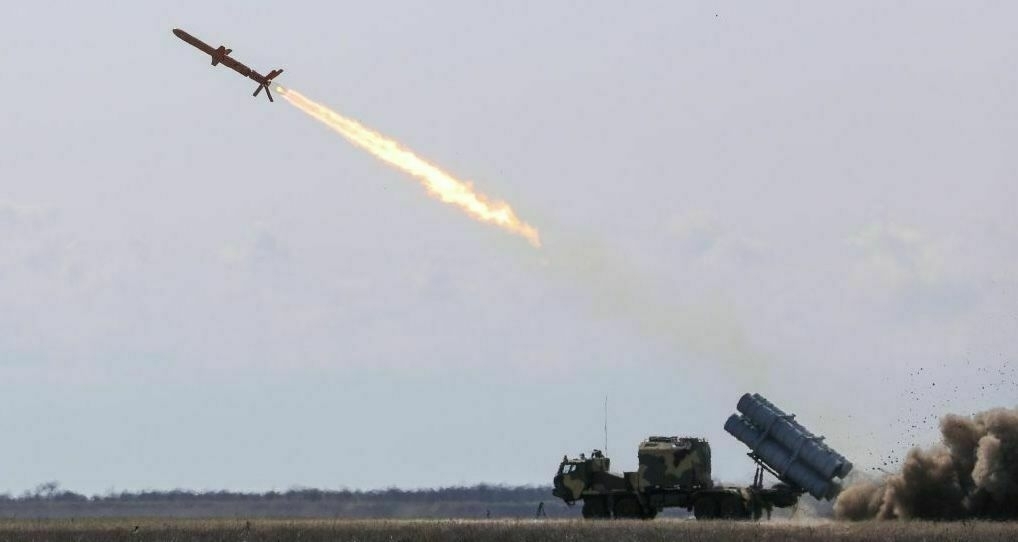
A Ukrainian-made Neptune-derived cruise missile is fired from an unspecified location in Ukraine on April 5, 2019. (Presidential Office of Ukraine) Hoffmann, for one, sees domestic anti-ballistic defenses as being far out of range for Ukraine’s wartime research and development relative to other, cheaper drone and missile development.
“If the Ukrainians start investing in indigenous BMD (ballistic missile defense), I’ll eat my shoe,” said Hoffmann. “That would not be worth it from an opportunity cost perspective.”
Ukraine consequently continues to bank on the West to provide more Patriot missiles.
What makes Patriot missiles uniqueThere are two main species of Patriot missiles critical to Ukraine today, PAC-2s and PAC-3s.
Raytheon makes Patriot ground systems, launchers, and PAC-2 missiles, which are primarily for shooting down cruise missiles. Lockheed Martin makes the PAC-3 missiles, which are, to all appearances, the best anti-ballistic defense on the international market, particularly the newest Missile Segment Enhancement (MSE) models.
The Ukrainian Air Force wrote early in April that since the start of the full-scale war, they had shot down 90 ballistic missiles and 40 Kinzhals, classified as “aeroballistics.”
Other air defense units in Ukraine include Soviet S-300s, Norwegian NASAMS, German Iris-Ts, and the French-Italian SAMP/T, the land-based system from Aster, and likely the closest competitor to the newest Patriots.
PAC-3s are uniquely designed to “hit to kill.” Traditional air defense missiles are shot into the sky to explode, sending shrapnel into adjacent incoming planes, drones, or missiles. Hit-to-kill missiles like the PAC-3 destroy their targets by physically flying into them.
A deck that Lockheed Martin provided to the Kyiv Independent touts that hit-to-kill attacks are far better at destroying not just the missile, but the explosives or even chemical charges that a missile is carrying. The company also says explosive air defense doesn’t change the flight path of ballistic missiles, leaving debris to fall more or less where it was initially heading.
In a statement, Lockheed Martin wrote to the Kyiv Independent: “PAC-3 Hit-to-kill technology encompasses advanced software and hardware components, including the seeker, a highly responsive airframe, agile control system, and guidance software. All components are necessary to achieve hit-to-kill capability.”
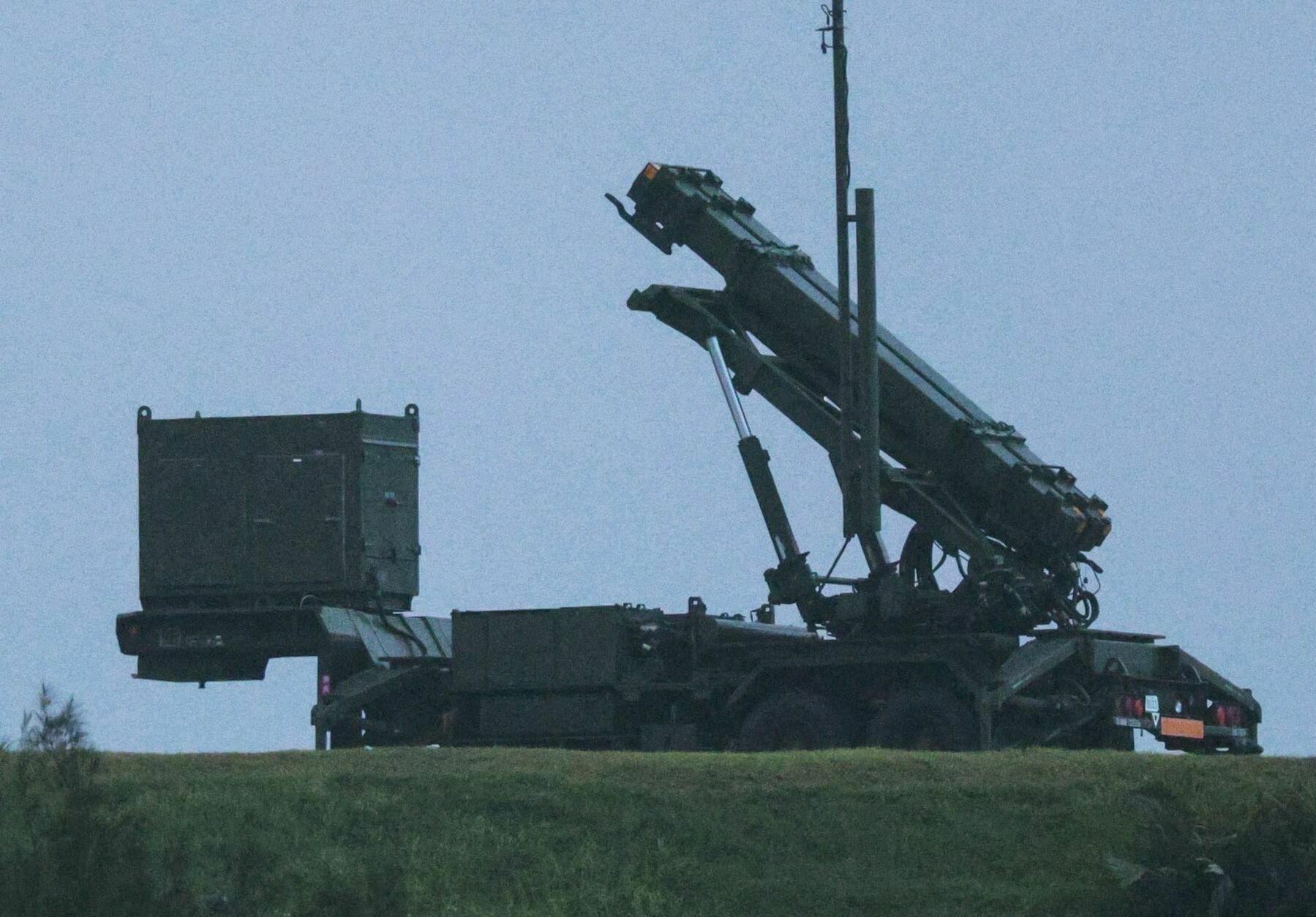
A Japan Air Self-Defense Force Patriot Advanced Capability-3 missile interceptor unit is seen deployed on Miyako Island in Okinawa Prefecture, Japan, on May 24, 2024. (Kyodo News via Getty Images) Without explosives, a PAC-3 is much smaller, lighter, and more maneuverable than a PAC-2. As a result, a standard Patriot launcher can fit 16 PAC-3s at once, as compared to four PAC-2s.
The precision targeting technology required for hit-to-kill is new. PAC-3s came under development when PAC-2s largely failed against Iraq’s arsenal of Soviet-made SCUD ballistic missiles in the first Gulf War. The embarrassment of those encounters prompted a new design that took a decade and a half to make operational.
To date, the U.S. is the only exporter of “hit-to-kill” technology in the world. China’s HQ-19 seems to use something similar, but public information is limited. The Chinese government announced a successful anti-ballistic test in 2022 but has remained quiet about details.
Russia, meanwhile, has the same S-300s as Ukraine as well as upgraded S-400s that Ukraine does not have. The Russian defense industry is working on the S-500 but has yet to properly field them.
Ukraine can similarly tinker with its stockpiles of S-300s, particularly with updated software and radar systems. But ammunition for those weapons is also running perilously low.
Ballistic patriotism and missile diplomacyThe PAC-3 MSEs boast two critical features. One is that they are uniquely effective at shooting down Russian ballistic missiles, as their time in Ukraine has demonstrated.
Thanks to this success, countries across Europe and the Middle East are petitioning the U.S. government to buy progressively more, with Germany getting the go-ahead for an unprecedented $5 billion purchase back in August.
The second critical feature of PAC-3s is that they are produced en masse, at a scale that is growing thanks to their performance in Ukraine and an increasing number of nations ordering them to defend themselves from ballistic missile attacks.
Lockheed Martin is planning to expand production from 500 to 650 annually. Multinational European missile maker MBDA has gotten the go-ahead to build the first manufacturing for Patriots outside of the U.S.
New production of Patriot missiles will, however, take years to build out. Largely thanks to their performance in Ukraine, a glut of new Patriot missiles should be going around in two years. Meanwhile, Ukrainian air defense remains largely dependent on foreign donations of missiles, whose supply is stretched thin worldwide.
Note from the author:
Hi there, this is Kollen, the author of this article. Thanks for reading. Ukrainians’ responses to Russia’s invasion showcase a society that is deeply resilient and inventive, despite pullbacks in aid. If you like reading stories highlighting the development of Ukraine’s wartime technology and economy from on the ground, please consider supporting our work by becoming a member of the Kyiv Independent.
Ukraine’s long-suffering aerospace giants look to Europe to break free from Russian orbitWhere the Donbas meets the Dnipro River, the USSR built out a dense range of massive factories, using the local coal and metal reserves to smelt, weld, and cast the heaviest of machinery — and weaponry — for the whole of the Soviet Union. One of these is Pivdenmash, formerly known by the Russian name, Yuzhmash, a factory that is effectively a city unto itself in the south of the city of Dnipro in central-eastern Ukraine. The great builder of the Soviet intercontinental ballistic missile (ICBM) The Kyiv IndependentKollen Post
The Kyiv IndependentKollen Post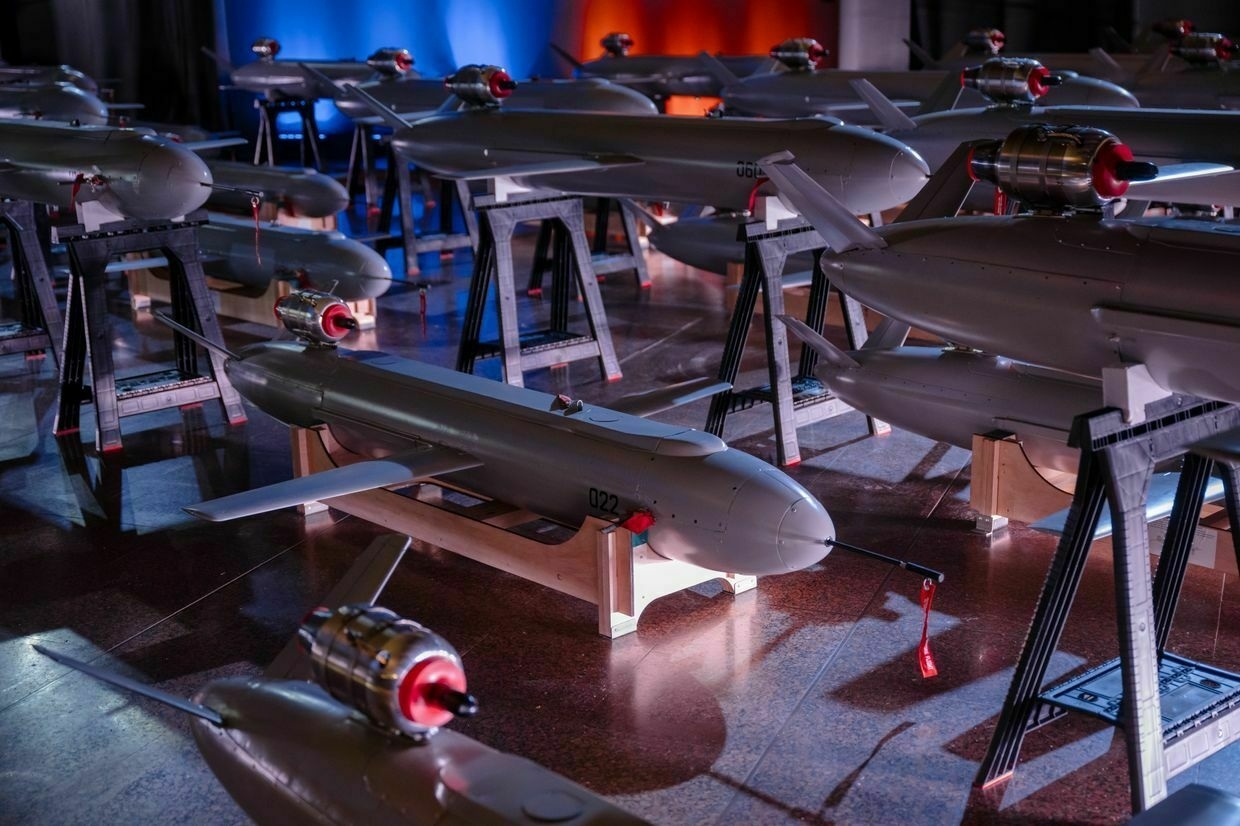
-
A day with Ukraine’s rescuers under Russian fire
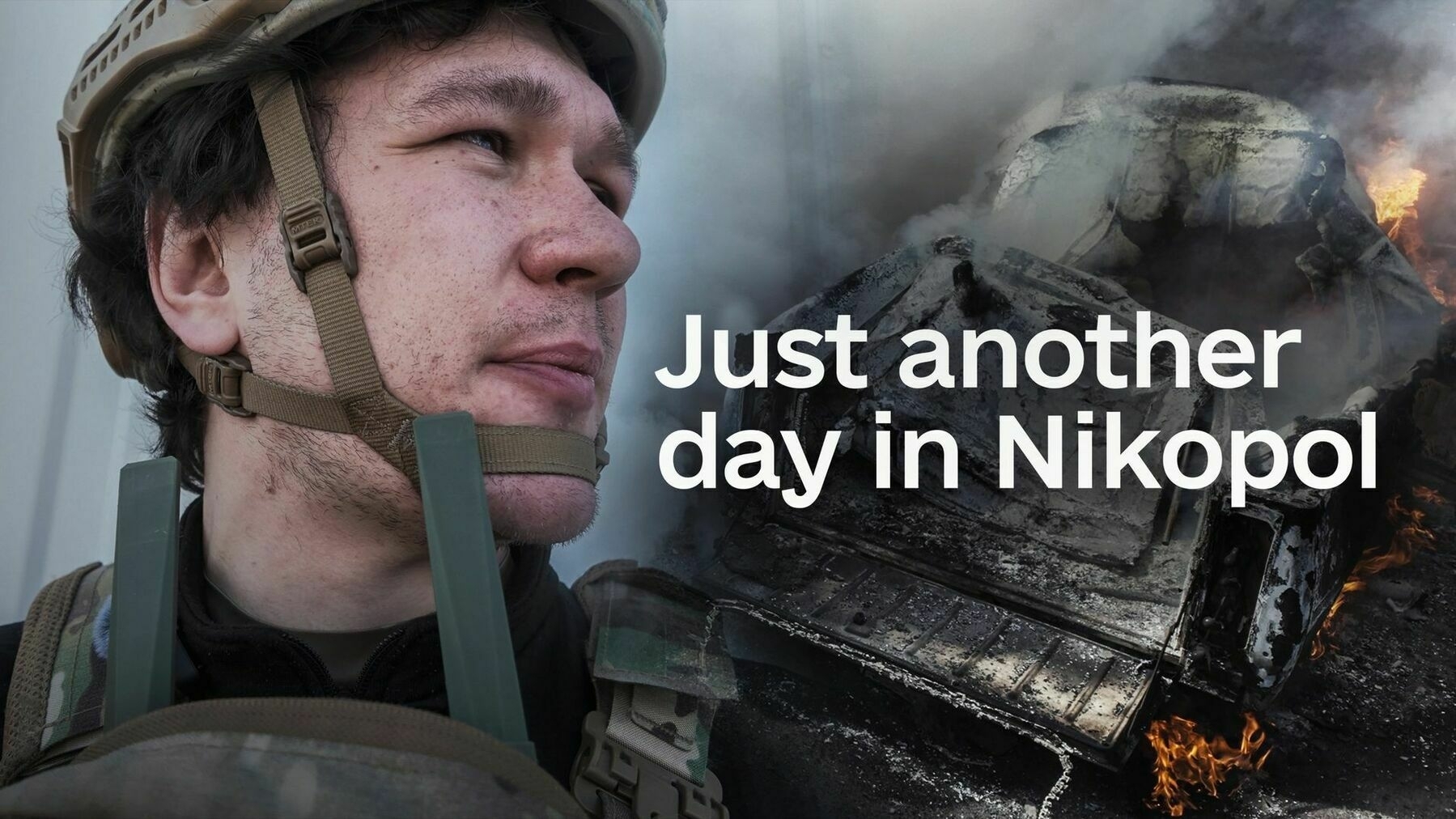
The Kyiv Independent’s contributor Ignatius Ivlev-Yorke spent a day with a mobile team from the State Emergency Service in Nikopol in the south of Ukraine as they responded to relentless drone, artillery, and mortar strikes from Russian forces just across the Dnipro River. Nikopol is located across from the Russian-occupied Zaporizhzhia Nuclear Power Plant in the city of Enerhodar.
-
What will the new pope mean for Ukraine?
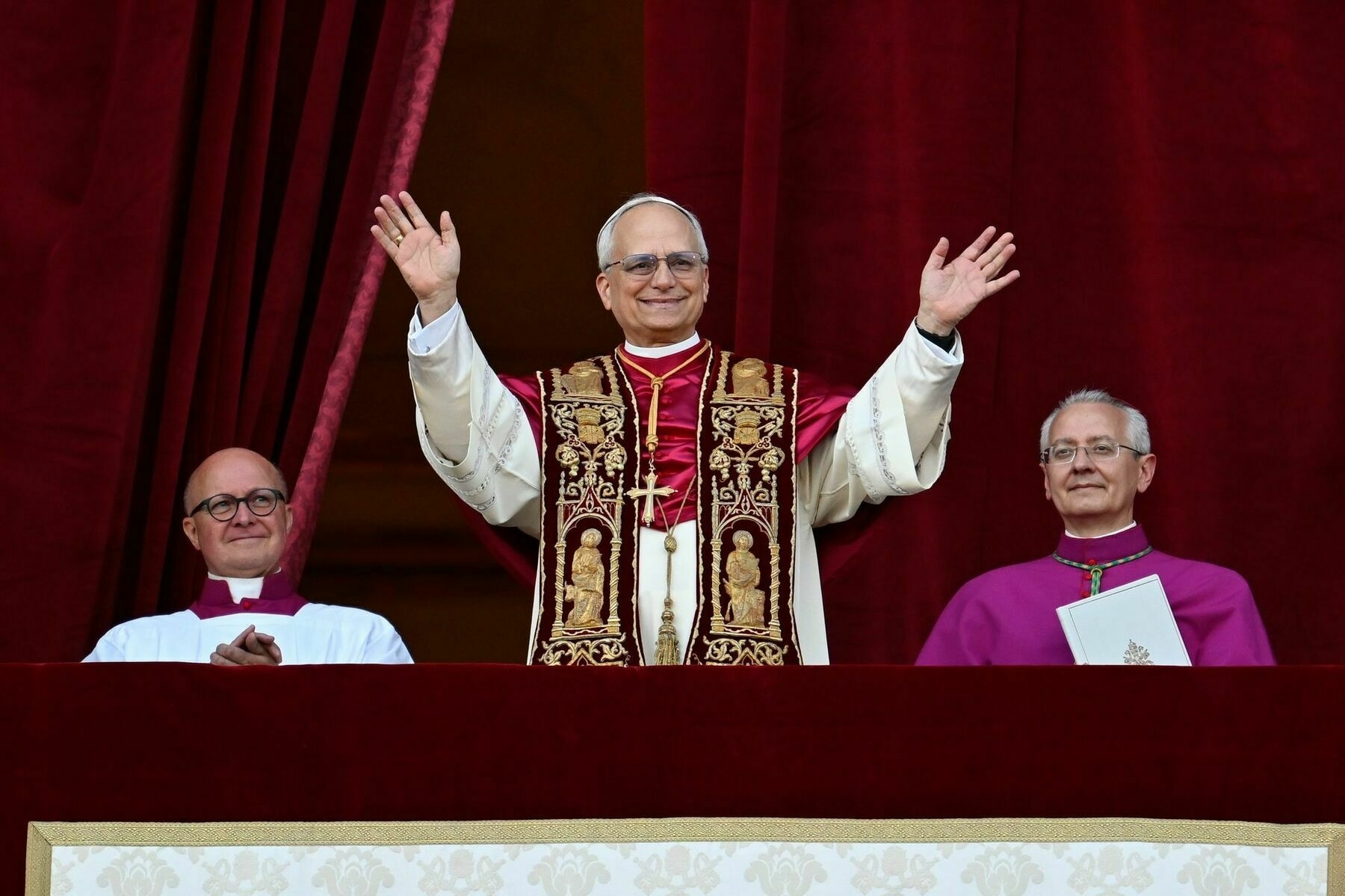
With the announcement that Cardinal Robert Francis Prevost has been chosen as the new pope and leader of the Catholic Church, Ukrainians are wondering what the surprise appointment of the American-born pontiff will mean for their country.
Past comments made by the new pope, who has taken the name Pope Leo XIV, quickly surfaced to form an idea of his views on immigration, gay rights, climate change, and the current U.S. administration. But with no similar public record of statements on Russia’s invasion, Ukrainians are left scrutinizing his public comments and hoping the world leader’s stance toward the ongoing war will benefit their country.
“I am not aware of any statements or actions the current pope has made regarding the war in Ukraine,” said Father Ihor Yatsiv, a spokesperson for the Greek Catholic Church in Ukraine, which falls under the Vatican’s leadership.
“So we can only operate based on who he is through his experience, his human life experience, his service, where he has been, where he comes from, and, accordingly, also after whom he comes.”
One potential sign of the pope’s future policies is in the selection of his new name, one of the first decisions a new pope makes. While Pope Leo XIV has not yet said why he selected Leo, a pontiff’s new name often refers to previous pontiffs whose footsteps they wish to follow.
“We identify Pope Leo XIV as a pope of hope for Ukraine.”
Pope Leo XIII, the most recent pope to use this name, is widely remembered for his championing of social policies and social justice.
He was “a pope who paid attention to the socially vulnerable, a pope who stood on the side of the oppressed, a pope who stood for justice and, accordingly, spoke out against the powerful of this world,” noted Yatsiv.
“We identify Pope Leo XIV as a pope of hope for Ukraine,” Yatsiv added.
Many observers have noted that the selection of an American pope — long considered taboo — is likely, in part, a response to the current policies enacted by U.S. President Donald Trump and a rise in isolationism from his administration.
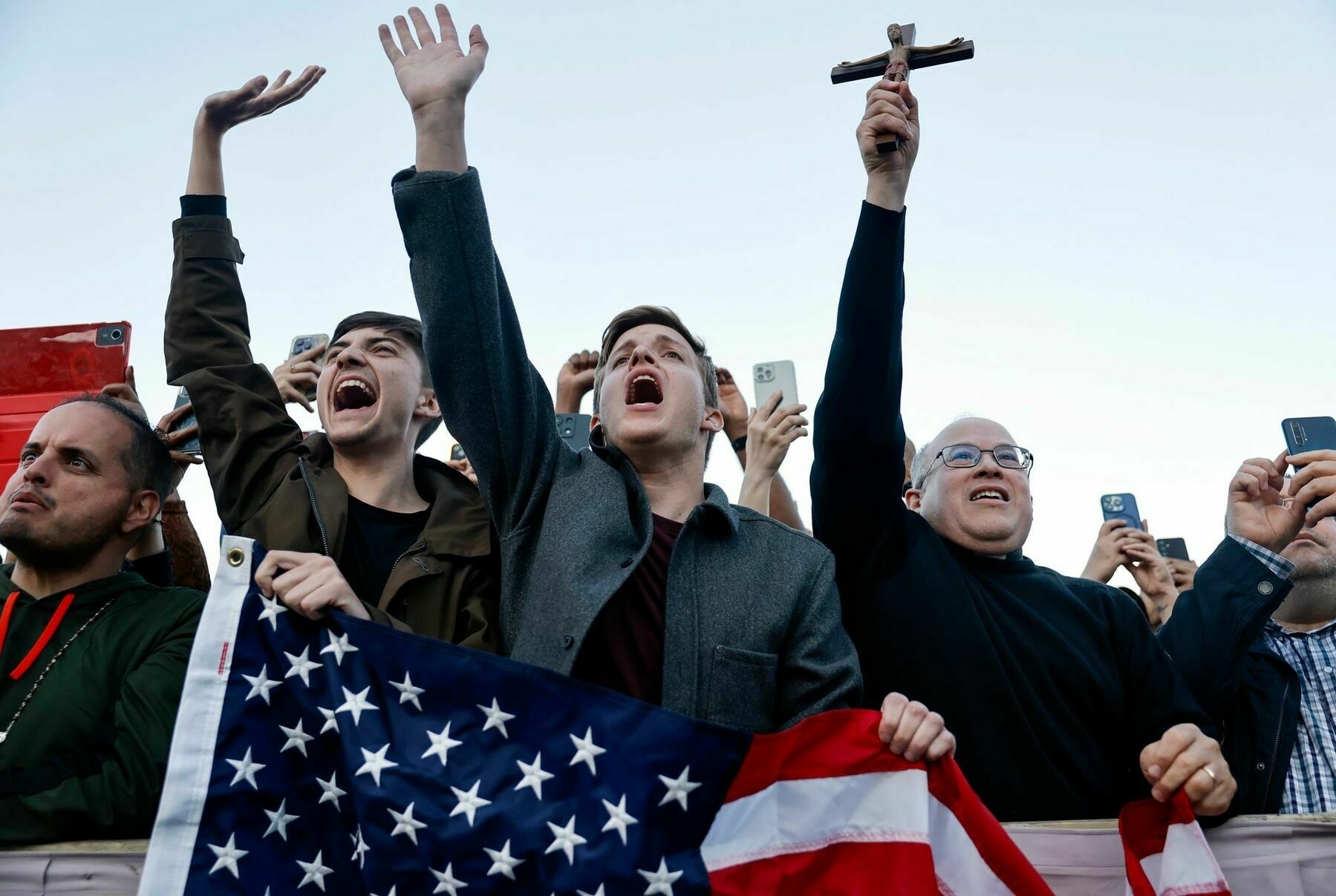
Americans from Texas, including Cole Wendling (C), celebrate after the announcement of newly elected Pope Leo XIV in Vatican City, Vatican, on May 8, 2025. (Mario Tama / Getty Images) “Trumpism has broken many international taboos in recent months,” said Massimo Faggioli, a professor of historical theology at Villanova University. “The conclave responded in kind by breaking another taboo: that it was not possible for a Catholic from the U.S., a superpower, to become pope, in order to avoid an overlap between political-military supremacy, and the leadership of the church symbolically, at least, heir to the Roman Empire.”
In selecting Pope Leo, the cardinals who voted may have aimed to counter Trump’s policies with a different message about what U.S. exceptionalism and greatness can look like, Faggioli said.
“It remains to be seen what it means for a pope from the U.S., in the world of the crisis of liberal and constitutional democracies today, to speak as the head of the Catholic Church and the Holy See to Russia and Ukraine, to Israel and the Arab world, to China and the two Koreas,” said Faggioli.
Prior to his election as the leader of the Catholic Church, Pope Leo had boosted criticisms aimed at the anti-immigration policies of Trump and his vice president, JD Vance, on X.
In February, he reposted an article titled, "JD Vance is wrong: Jesus doesn't ask us to rank our love for others."
Pope Leo succeeds Pope Francis, who left behind a mixed legacy on the war in Ukraine. His repeated calls for peace often left Ukrainians frustrated by his failure to call out Russia as the aggressor or to condemn Russian President Vladimir Putin.
While this reflects the Vatican’s commitment to neutrality, allowing it to carry out a humanitarian role and negotiate prisoner exchanges, it also came under fire as being influenced by the historic ties between Moscow and the Vatican.
After it was announced that Cardinal Robert Prevost would replace him as the new church leader, President Volodymyr Zelensky congratulated Pope Leo XIV on social media, saying, “Ukraine deeply values the Holy See’s consistent position in upholding international law, condemning the Russian Federation’s military aggression against Ukraine, and protecting the rights of innocent civilians.”
Pope Francis leaves a mixed legacy in wartime Ukraine, overshadowed by historic Vatican-Moscow tiesPope Francis, who passed away on April 21 at 88, leaves behind a legacy as vast and varied as his global influence. Yet in Ukraine, his track record is far from positive. For many Ukrainians, the Pope’s legacy is shaped by his repeated downplaying of the gravity of Ukraine’s fight for its survival in Russia’s war of aggression. His sweeping calls for peace over the past three years – from calling Ukrainians and Russians “brothers” to urging Ukraine to “have the courage of the white flag” in ne The Kyiv IndependentKate Tsurkan
The Kyiv IndependentKate Tsurkan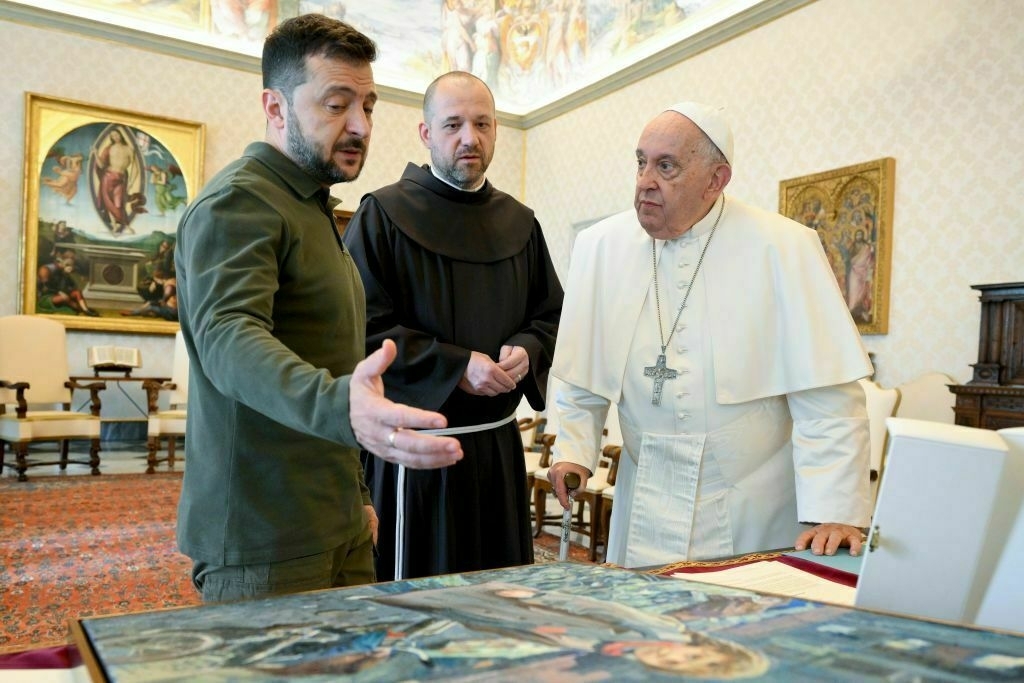
-
Covert gathering in Baku: German and Russian politicians discuss reviving the 'Petersburg Dialogue'
Russian and German political officials reportedly met in Baku for a covert meeting assumed to focus on the future of the "Petersburg Dialogue." This forum, an intricate symbol of bilateral relations, became defunct following the eruption of hostilities between Russia and Ukraine. The gathering captured attention on Wednesday, May 8, when German public broadcaster ARD and Die Zeit highlighted the proceedings.
Representing Germany were prominent figures like Ralf Stegner, a seasoned foreign policy strategist from the Social Democratic Party (SPD), ex-head of the Federal Chancellery Ronald Pofalla, Christian Democrat Stephan Holthoff-Pförtner, who formerly managed federal and European affairs in the North Rhine-Westphalia government, and Martin Hoffmann, a past Executive Director of the "Petersburg Dialogue."
They confirmed their presence, maintaining it was a private endeavor, without governmental backing or financial support. The German Foreign Ministry echoed this stance, clarifying that these dialogues were not state-sponsored. Additionally, Swiss diplomat Thomas Greminger, ex-OSCE Secretary-General, was noted to have been in Baku, though he refrained from comments.
On the Russian side, the assembly featured Viktor Zubkov, once Russia’s Prime Minister and current chairman of Gazprom’s board, leading the "Petersburg Dialogue" from the Russian side. Valery Fadeev, chair of the Human Rights Council under Russia’s President, also participated. The meet marks at least the third occurrence, with similarly comprised delegations having met twice in Baku during 2024.
Details on the discussions were scarce, only alluding to talks about reviving the "Petersburg Dialogue," originally initiated by Putin and ex-German Chancellor Gerhard Schröder in 2001. It was stopped post-Russia's Ukraine invasion.
Journalists noted significant scrutiny surrounds Ralf Stegner, once a Bundestag member overseeing Germany's intelligence services. ARD outlines his privileged knowledge as particularly appealing to Russian interests.
Marie-Agnès Strack-Zimmermann, the FDP's security policy specialist and a Member of the European Parliament, voiced strong reservations against Stegner’s inclusion in key committees of the new Bundestag, citing the need for candidates to be "untouchable and trustworthy" – a standard she claims he does not meet.
-
Kremlin confirms talks with US on revival of Russian gas supplies to Europe
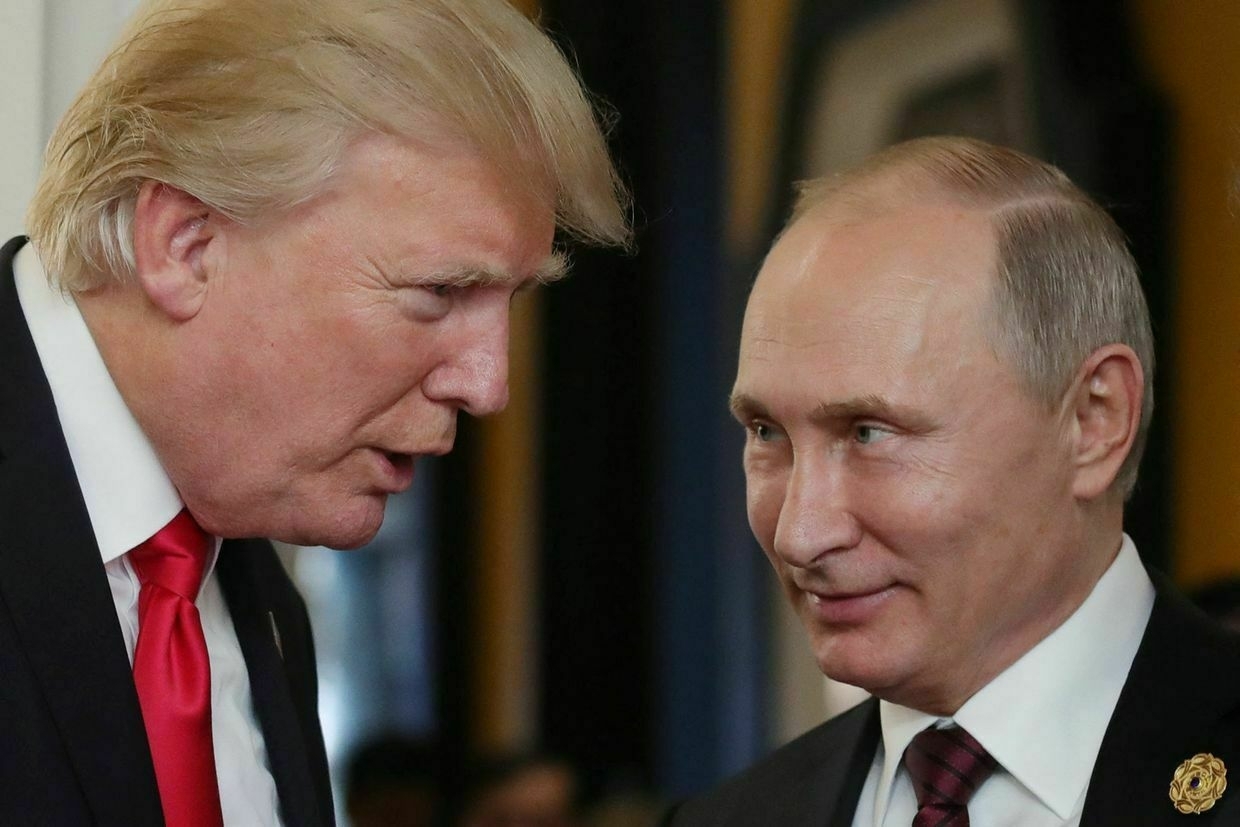
Moscow and Washington have discussed the potential resumption of Russian gas supplies to Europe, among other issues related to the peaceful settlement of Russia’s war in Ukraine, Russian presidential aide Yuri Ushakov confirmed to the Russian state-run Interfax news agency.
Ushakov’s statement follows a Reuters report on the gas talks between the U.S., confirmed by eight sources familiar with the matter.
Washington’s involvement may also help mitigate political opposition in Europe, while giving the U.S. strategic visibility over future Russian energy flows, sources told the news agency.
“We raise this topic with the Americans, but with whom else, frankly, I don’t understand,” Ushakov told the Russian state-run Interfax news agency.
Following Russia’s full-scale invasion of Ukraine in 2022, European Union nations dramatically cut their imports of Russian gas. State energy giant Gazprom reported a $13.1 billion loss in 2024 as a result. Russian pipeline gas now accounts for only 19% of European supply, down from 45%.
Despite efforts to diversify, some EU countries, like Hungary, Slovakia, Belgium, and France, continue receiving Russian gas through pipelines or long-term liquefied natural gas (LNG) contracts.
U.S. special envoy Steve Witkoff and a Kremlin envoy Kirill Dmitriev have discussed gas exports, two of Reuters' sources said.
The two met last in St. Petersburg on April 11. Russia’s Direct Investment Fund denied the talks at the time, stating, “Currently, there are no such discussions."
Still, opposition in Brussels remains firm. After years of reducing its reliance on Russian gas since the full-scale invasion of Ukraine, on May 6 the European Commission presented a detailed roadmap to fully sever the European Union’s energy dependence on Russia by 2027.
The plan has been described as the bloc’s most comprehensive effort yet to end imports of Russian gas, oil, and nuclear fuel, a dependency critics argue has long compromised EU sovereignty and funded the Kremlin’s war machine in Ukraine.
Russian regime’s legitimacy rests on the manipulation of historyWorld War II was a bloodbath of unspeakable proportions, planned and executed by totalitarian powers. It brought the catastrophe of the Holocaust. It also led to the division of Europe and loss of freedom of many nations in Europe, including my own. Today, at the time of commemoration of 80 years since the end of World War II, Russia is singularly responsible for launching the most devastating war in Europe since 1945. Three years into the full-scale war, Russia has failed to achieve its war ai The Kyiv IndependentBaiba Braze
The Kyiv IndependentBaiba Braze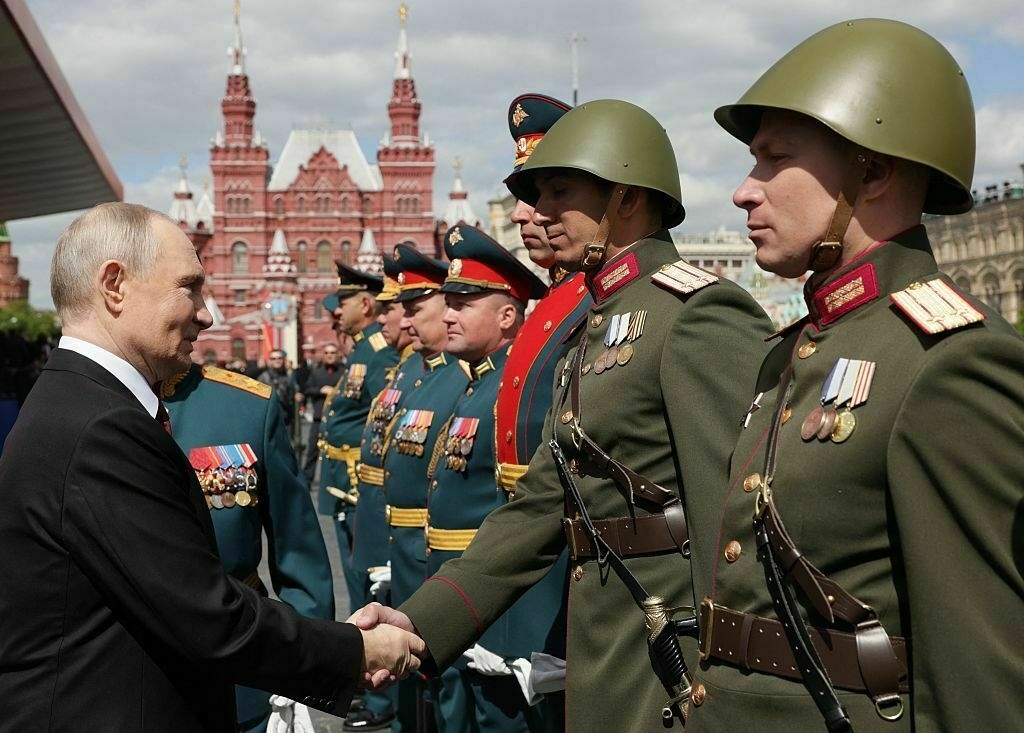
-
“They never said it was a war” — Confession of a captured Russian soldier
-
5 things Putin conveniently left out of his Victory Day speech in Moscow
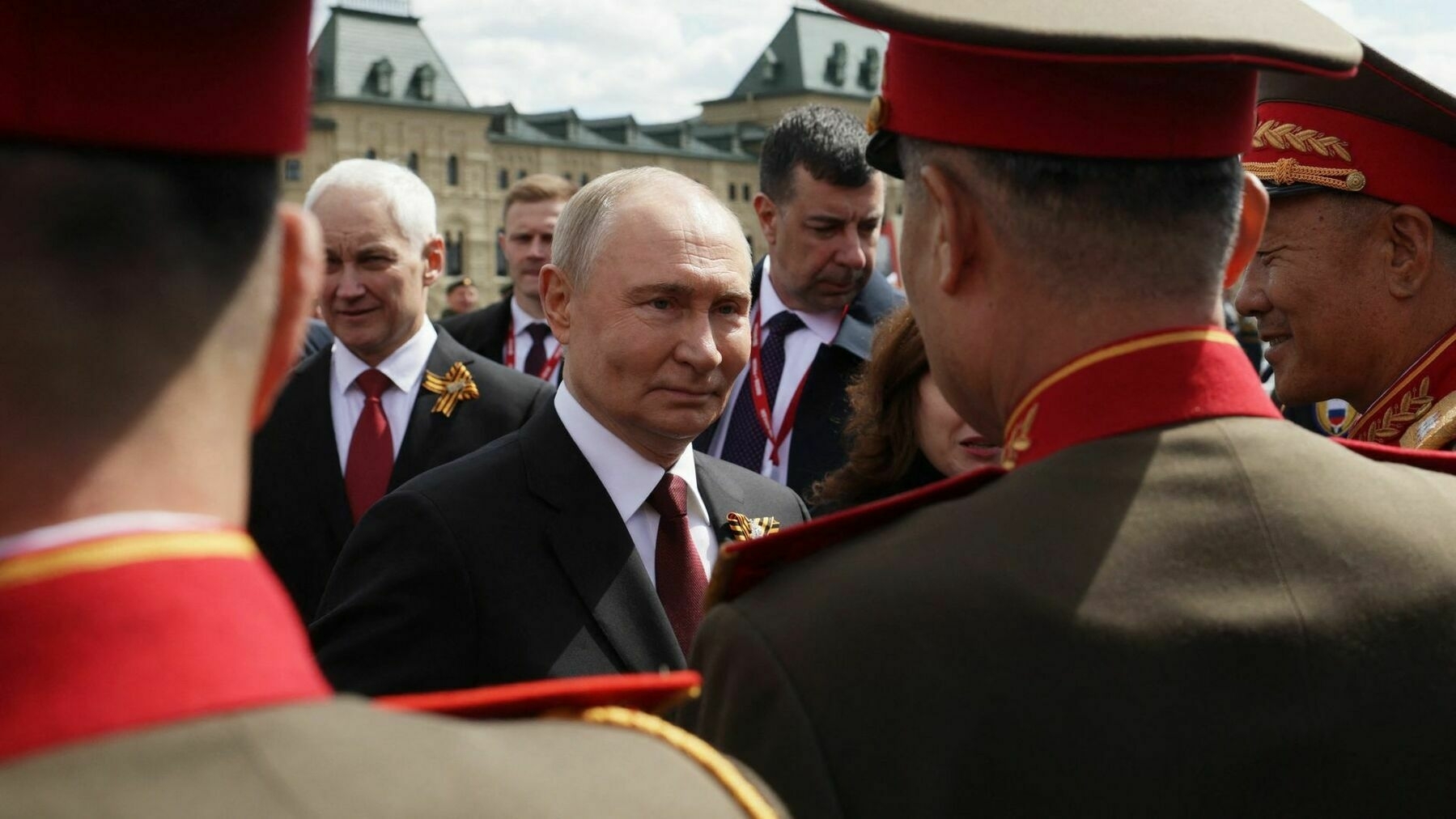
Amid much pomp, military machinery, and the threat of Ukrainian drone strikes, Russian President Vladimir Putin has delivered his annual speech to mark his country’s Victory Day parade.
The Kremlin’s celebrations, which mark the Soviet Union’s role in defeating Nazi Germany in World War II, are one of the country’s biggest public events of the year.
The annual event is also a key part of Putin’s propaganda efforts to justify aggression against what the Kremlin falsely portrays as “Nazis” in Ukraine.
“Putin needs this victory cult that he has created,” Andrej Lushnycky, author, historian, and president of the Ukrainian Society of Switzerland, told the Kyiv Independent.
“He needs this in order for his own people to accept the terrible conditions that they’re still living under in this authoritarian state."
The Kyiv Independent spoke to Lushnycky to get his thoughts on what Putin said during his Victory Day speech — and what he conveniently forgot to mention.
1) ‘Russian soldiers’
“Our fathers, grandfathers, and great-grandfathers saved the Fatherland… Our duty is to defend the honor of the soldiers and commanders of the Red Army, the great feat of representatives of different nationalities, who will forever remain in world history as Russian soldiers."
Putin’s attempt to conflate Russian and Soviet soldiers, and his brief nod to “different nationalities,” belies one major historical fact — at least six million Ukrainians fought in the Soviet army.
“The truth is that hundreds of thousands of their own troops were killed by the Soviets because they defected, or they didn’t have uniforms, they were turning back, or they were just shot in the back of the head.”
Though exact numbers are unknown, it's estimated that around 1.65 million of the Ukrainians who fought were killed, the highest number from any of the Soviet republics after Russia itself.
Then there is the stark difference between Putin's veneration of Soviet soldiers and the treatment they faced during the war.
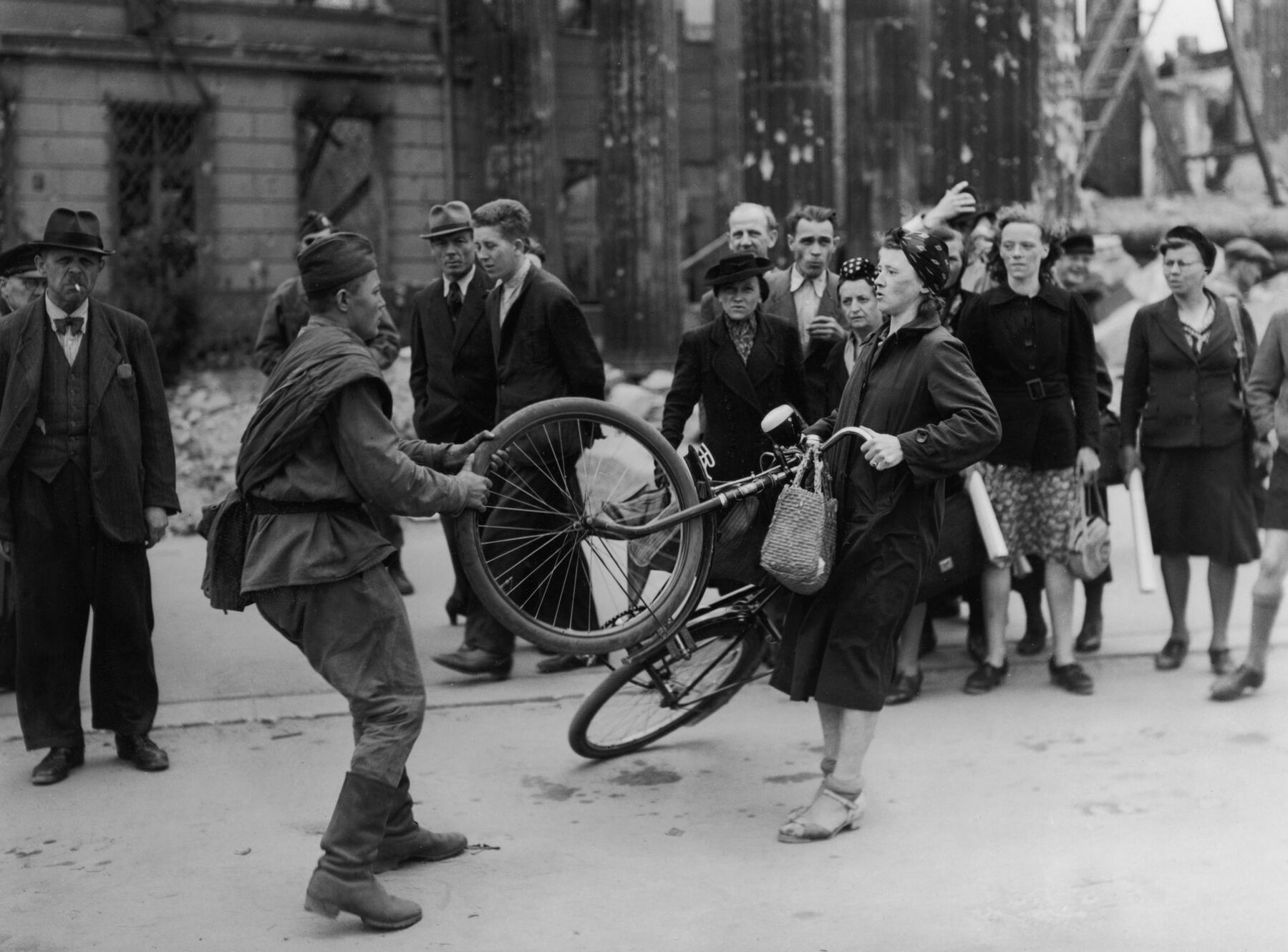
A Russian soldier attempts to steal a bicycle from a German woman, in Berlin, Germany, in 1945. (Keystone / Getty Images) 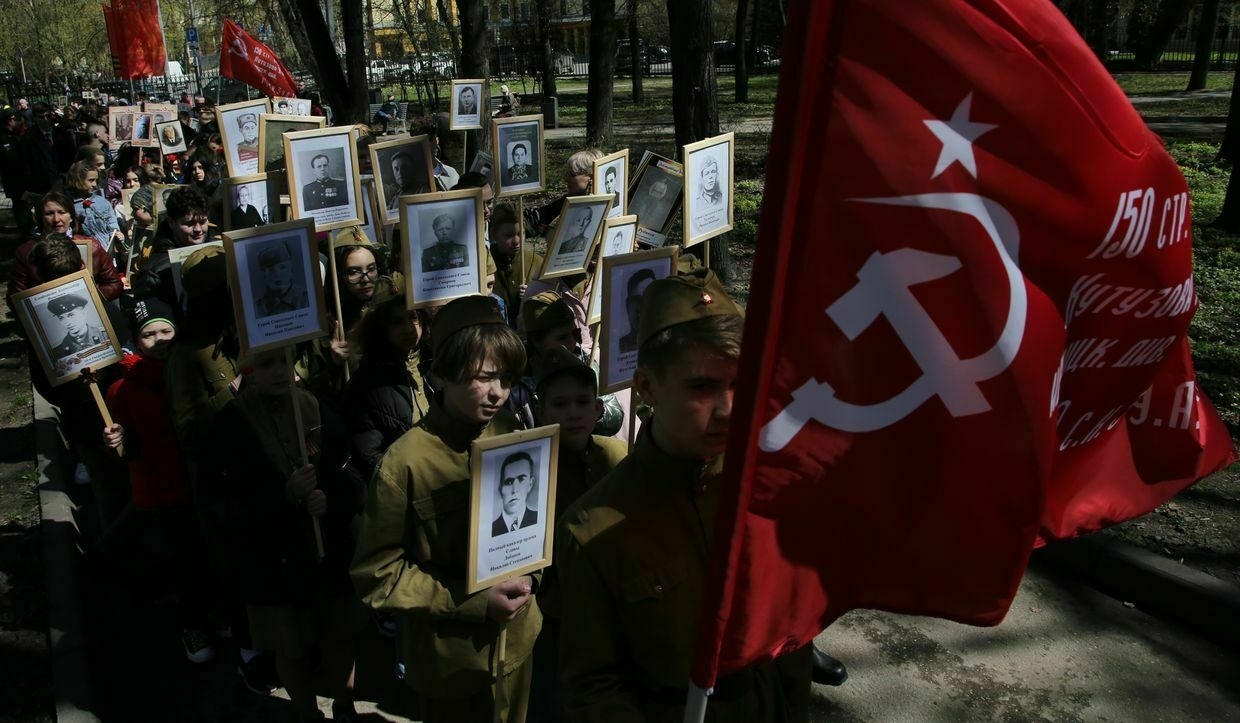
Children carry Soviet flags and portraits of relatives who participated in World War II during the Immortal Regiment rally in Leningradsky Garden in Moscow, Russia, on May 5, 2022. (Contributor / Getty Images) "The truth is that hundreds of thousands of their own troops were killed by the Soviets because they defected, or they didn't have uniforms, they were turning back, or they were just shot in the back of the head," Lushnycky said.
"Human life really doesn't have any value in Russia today, nor can you really say it had value during the Soviet times. Look at the history — whether it was Chornobyl, whether it was the Holodomor, whether it was the way the soldiers were treated that fought in the Second World War."
"Nazis' plan" involved the Soviet Union collaborating with the Nazis in order to carve up Europe between them.
2) The Nazi's plan
"The Nazis' plans to seize the Soviet Union were shattered by the country's truly iron unity."
Soviet and Russian histories like to start the history of World War II in 1941 when the Soviet Union was attacked by Nazi Germany.
There's a good reason they gloss over the preceding years — quite a significant part of the "Nazis' plan" involved the Soviet Union collaborating with the Nazis in order to carve up Europe between them.
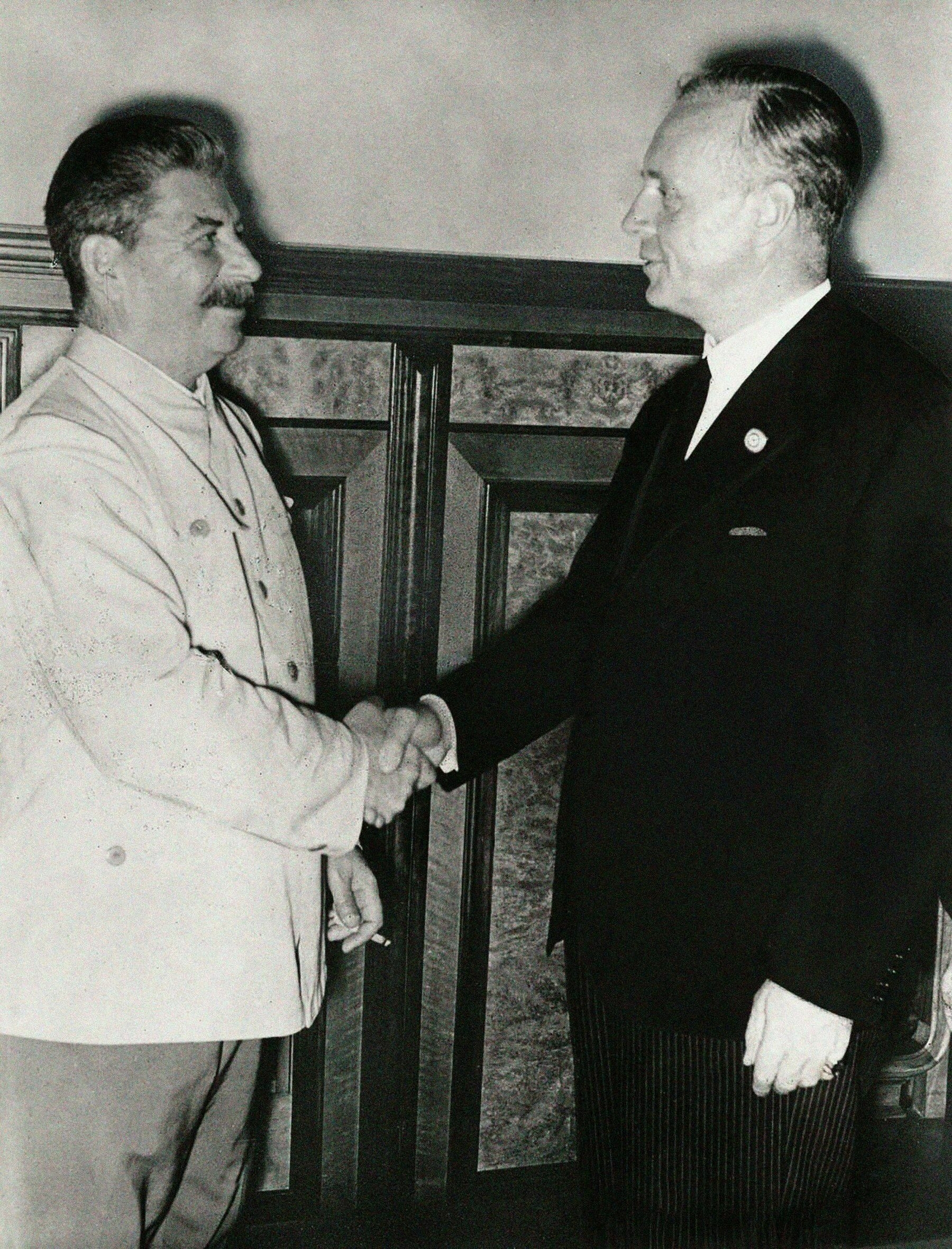
Soviet leader Joseph Stalin and German Foreign Minister Joachim von Ribbentrop in Moscow, Soviet Union, on Aug. 23, 1939, the day the Molotov-Ribbentrop Pact was signed. (Fine Art Images / Heritage Images via Getty Images) The Molotov-Ribbentrop Pact signed days before World War II in 1939, paved the way for Nazi Germany and the Soviet Union to invade Poland 17 days apart.
The Soviet Union also fought a brutal war against Finland and occupied Estonia, Latvia, and Lithuania, as well as parts of Poland and Romania in 1939-1940.
"Western armies were armies of liberation, whereas the Soviet army was just an army of occupation," Lushnycky said.
3) Nazism
"Russia has been and will be an indestructible barrier to Nazism."
The Nazis went down in history for launching the most destructive and devastating war of genocidal aggression of all time.
Russia is currently waging the most destructive and devastating genocidal war of aggression in Europe since the Nazis.
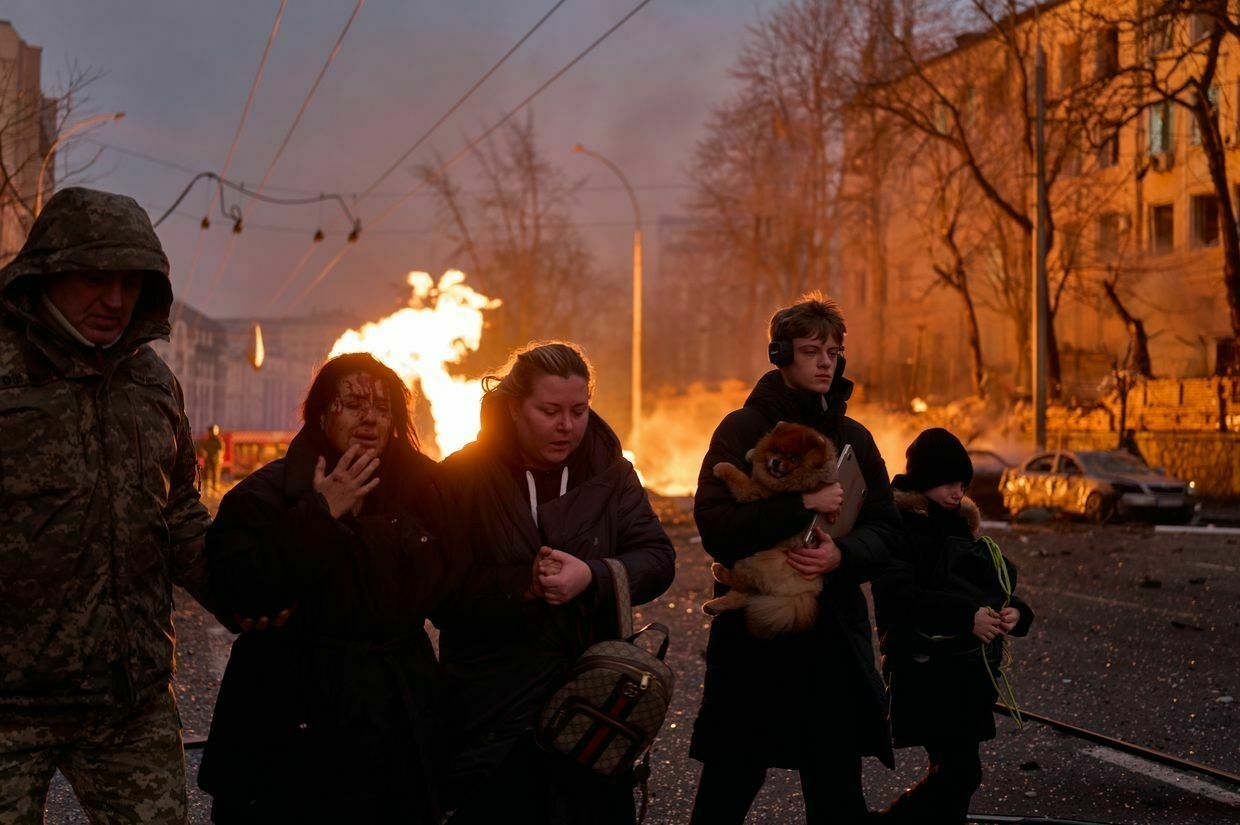
Civilians leave the site after a Russian ballistic missile strike in the city center of Kyiv, Ukraine, on Dec. 20, 2024. (Vlada Liberova / Libkos / Getty Images) According to Lushnycky, this perverse twisting of what it means to be a Nazi is a necessary tool for Putin in order to distract the Russian people from the reality in their own country.
"It's just conjuring up these old images that the regime in Moscow needs in order to bring people together, and to have them overlook the hardships that they're enduring because of his foolhardy stewardship," Lushnycky said.
4) The role of allies
"Today, we are all united by feelings of joy and sorrow, pride and gratitude, and admiration for the generation that crushed Nazism and, at the cost of millions of lives, won freedom and peace for all of humanity."
While Putin did give a nod to the "contribution" of the "allied armies" in the defeat of Nazi Germany, his Victory Day speeches always play up the role of the Soviet Army while downplaying the size of those "contributions" from the allies.
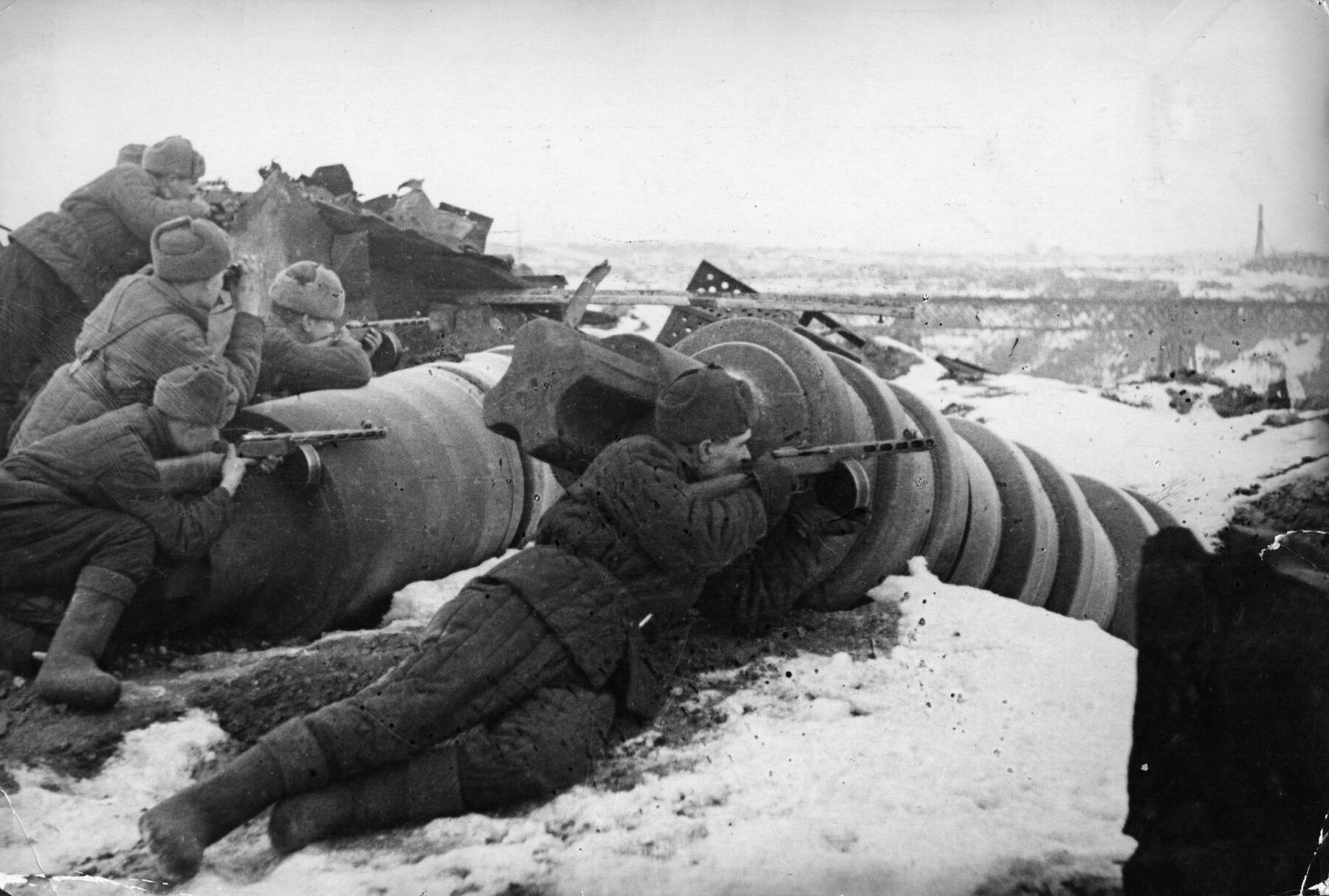
Soviet troops armed with light machine guns attack German forces near the Red October plant in Stalingrad, Soviet Union, on Nov. 26, 1942. (Hulton Archive / Getty Images) The biggest elephant in the room is the U.S. lend-lease program, which, from 1941-45, saw Washington ship the Soviets the modern-day equivalent of $180 billion worth of arms, equipment, and food.
"Without the lend-lease of the United States — and both (Soviet leaders Josef) Stalin and later (Nikita) Khrushchev even agreed to this — that without this material assistance, the Soviets would have lost the war," Lushnycky said
5) 'Distortion of events'
"We remember the lessons of the Second World War and will never agree with the distortion of its events, with attempts to justify the executioners and slander the true victors."
See points 1-4.
‘I don’t think Putin will agree to a peace agreement ever’ — Volker on peace talks between Ukraine, RussiaKurt Volker said that now “there is more alignment” between Ukraine and the U.S. under the Trump Administration than at the beginning of 2025. The Kyiv IndependentKateryna Hodunova
The Kyiv IndependentKateryna Hodunova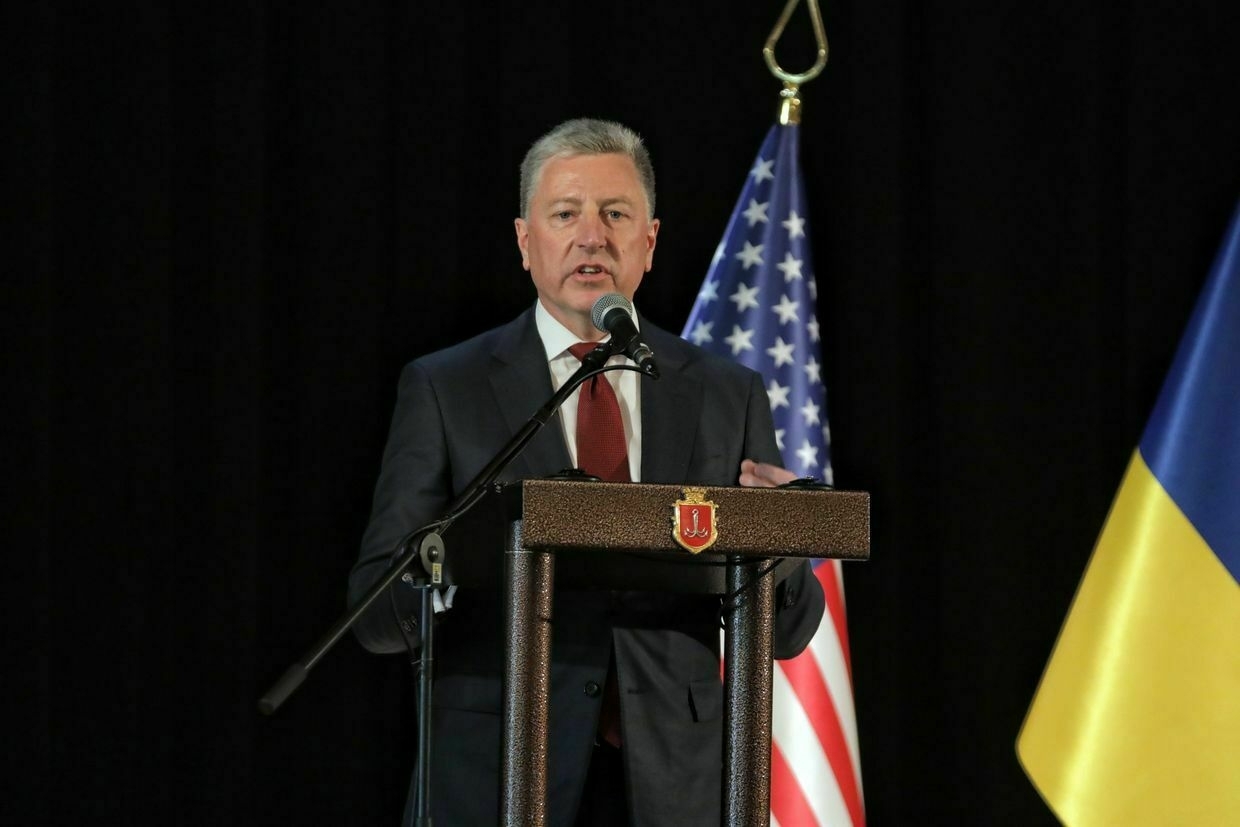
-
EU to provide Ukraine with over 1 million shells over 2025, allocate over $2 billion for military aid from Russian frozen assets
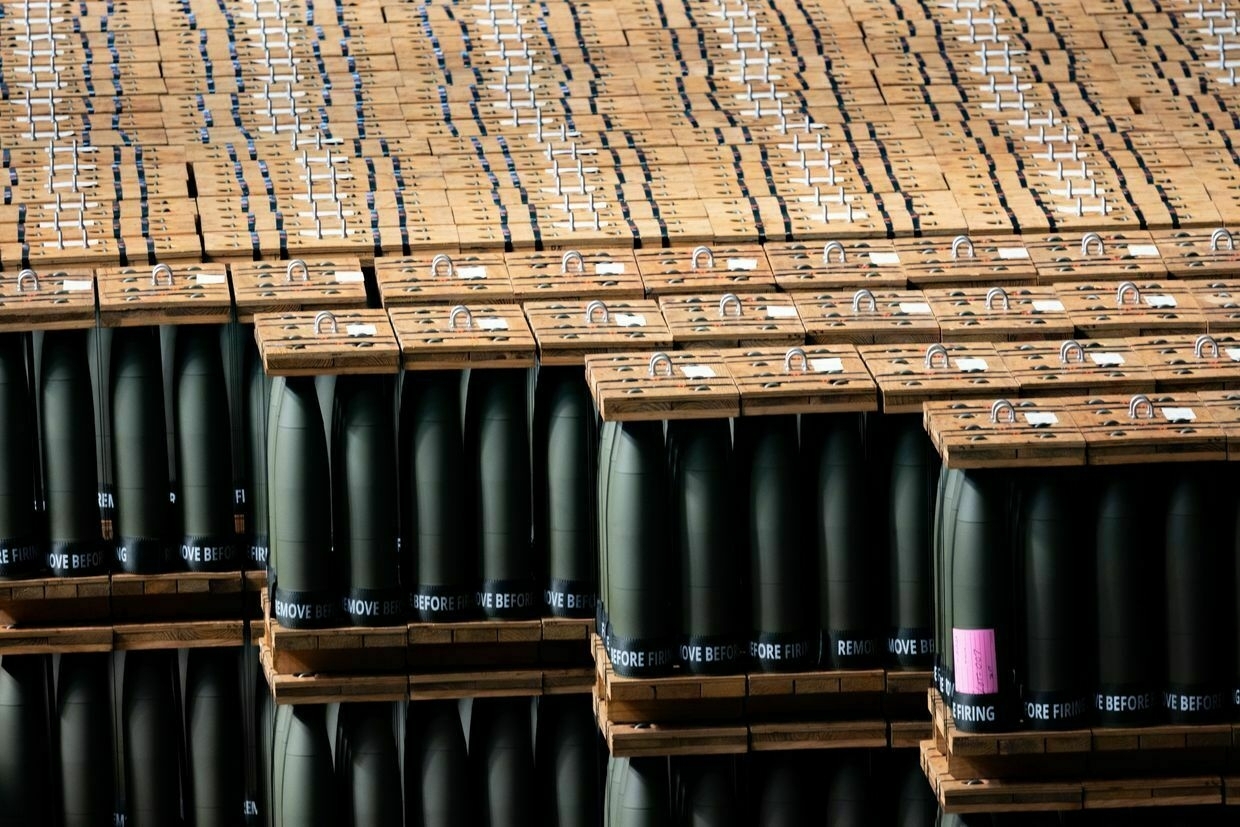
The European Union has pledged to supply over 1.35 million rounds in 2025 and plans to allocate nearly 1.9 billion euro ($2.1 billion) from Russian frozen assets in military support for Ukraine, Ukrainian officials announced on May 9.
The news comes as delegations from 35 countries and the Council of Europe gathered in Lviv to discuss the establishment of a special tribunal against the Russian leadership and new defense aid for Ukraine.
Ukrainian foreign minister Andrii Sybiha thanked the EU’s top diplomat, Kaja Kallas, and EU allies for the initiative to provide 2 million artillery rounds for Ukraine. According to Sybiha, by the end of 2025, European partners must send Ukraine at least 1.35 million shells, while work to increase this number is ongoing.
The minister also highlighted the new EU instruments for the long-term development of the European defense sector and the accelerated integration of the Ukrainian and European defense industries.
“This will strengthen European defense with our unique technologies and strengthen our defenders on the battlefield,” Sybiha said.
Following the event in Lviv, Prime Minister Denys Shmyhal said that the EU has announced its intention to allocate almost 1.9 billion euro ($2.1 billion) for military support to Ukraine.
“This is a historic decision, as weapons for Ukraine will be purchased at the expense of the proceeds from frozen Russian assets through the European Peace Fund,” Shmyhal said.
One billion euros ($1.1 billion) of this sum will be used to purchase weapons according to the Danish model, that is, directly from Ukrainian manufacturers, by Italy, Denmark, France, and the Netherlands, Shmyhal added.
Another 600 million euros ($676 million) will be spent on artillery and ammunition, while more than 200 million euros ($226 million) will be spent on strengthening Ukraine’s air defense, according to Shmyhal.
Speaking at the same event, French foreign minister Jean-Noël Barrot announced that Paris will allocate profits from frozen Russian assets to the maintenance of CEASAR 155mm howitzers, of which Ukraine has received dozens since 2022.
Since the beginning of the full-scale invasion, Europe has allocated 138 billion euros ($157 billion), 23 billion euros ($26 billion) more than the U.S., according to an April 15 report by the Kiel Institute for the World Economy’s Ukraine Aid Tracker.
The U.S. still holds an edge in terms of military aid — its 65 billion euros ($74 billion) total leads Europe by 1 billion euros ($1.1 billion) — but the gap is narrowing, as Washington has not allocated a new aid package since Jan. 9, still under the Biden administration.
‘The front is noisy’ — for Ukraine’s soldiers, Russia’s Victory Day ‘ceasefire’ is yet another shamMoscow’s self-declared truce which came into force at midnight on May 8 is not being felt on the front lines, Ukrainian soldiers have told the Kyiv Independent, reporting numerous cases of Russian military activity throughout the day. “There is no truce. There is shelling, artillery, drone and FPV (bomb) drops,” Petro Kuzyk, a battalion commander at the National Guard, said. The Kremlin announced the measure on April 28, claiming all military actions would halt on May 8 to midnight on May 11 t The Kyiv IndependentChris York,
The Kyiv IndependentChris York,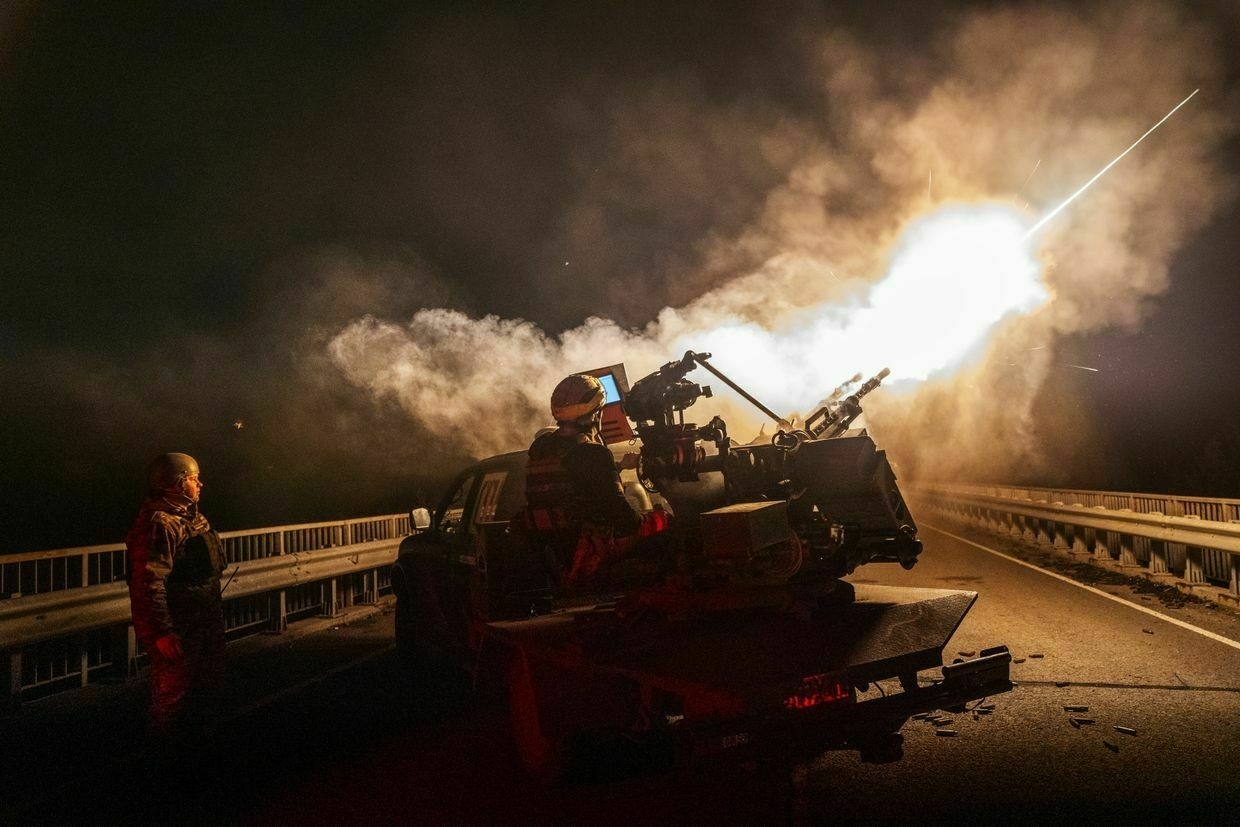
-
UK announces largest sanctions ever against Russia's 'shadow fleet'
UK Prime Minister Keir Starmer has announced plans to impose punitive measures on about 100 ships from Russia's so-called "shadow fleet," used to circumvent Western sanctions and the oil embargo. This announcement, outlined on the British government's website on Friday, May 9, underscores the UK's commitment to ramping up pressure on Russia.
These measures are described by London as "the most extensive sanctions package in history." Starmer is expected to unveil the new sanctions at a summit of Joint Expeditionary Force (JEF) member countries in Oslo, Norway. The summit's agenda includes discussions on protecting underwater infrastructure from deliberate attacks.
"The shadow fleet operation, orchestrated by Putin's associates, isn't just funding the Kremlin's unlawful war in Ukraine—it also poses risks to critical national infrastructure," highlighted the British government statement.
The UK pointed out the importance of underwater infrastructure, noting that "99% of international telecommunications data and vital energy sources like electricity, oil, and gas" are transmitted through such means.
Russia's "shadow fleet" consists of numerous tankers and cargo ships with opaque ownership structures, often older and uninsured, used to transport Russian oil and other resources in violation of sanctions. Since the beginning of the year, these ships have faced increasing accusations of conducting deliberate attacks on underwater infrastructure in the Baltic Sea.
Some vessels are suspected of severing undersea cables, with investigators believing ships intentionally drag anchors along the sea bed for several kilometers to cut cables. However, investigators have been unable to conclusively prove that these incidents are deliberate sabotage rather than crew error or other factors.
Previously, the European Union signaled its intent to sanction 60 individuals and entities, along with 150 vessels linked to the "shadow fleet."
-
An absolute record! More than 500 drones attacked Russia #shorts
-
'I don't think Putin will agree to a peace agreement ever' — Volker on peace talks between Ukraine, Russia

Kurt Volker, a former U.S. special representative for Ukraine, does not believe that Russian President Vladimir Putin will ever agree to a negotiated peace deal, he said during an open discussion on May 9 at the American University Kyiv, attended by the Kyiv Independent journalist.
The Trump administration has been attempting to bring Kyiv and Moscow to the negotiating table. Yet, progress has been limited. Trump’s team has pressured Kyiv to make concessions to Russia without applying visible pressure on Moscow to halt its aggression.
Volker said that now “there is more alignment” between Ukraine and the U.S. under the Trump Administration than at the beginning of 2025, when U.S. President Trump and Vice President JD Vance sharply criticized President Volodymyr Zelensky over what they described as “a lack of gratitude for U.S. support."
According to Volker, the talks between the U.S., Ukraine, and Russia have shown that the latter is not willing to end the war, which is shifting the pressure point away from Kyiv to Moscow.
“I don’t think Putin will agree to a peace agreement ever,” Volker said. “I think we’ll end up with a standoff."
The diplomat also said that Putin is unlikely to agree to a ceasefire before the fall.
‘The front is noisy’ — for Ukraine’s soldiers, Russia’s Victory Day ‘ceasefire’ is yet another shamMoscow’s self-declared truce which came into force at midnight on May 8 is not being felt on the front lines, Ukrainian soldiers have told the Kyiv Independent, reporting numerous cases of Russian military activity throughout the day. “There is no truce. There is shelling, artillery, drone and FPV (bomb) drops,” Petro Kuzyk, a battalion commander at the National Guard, said. The Kremlin announced the measure on April 28, claiming all military actions would halt on May 8 to midnight on May 11 t The Kyiv IndependentChris York,
The Kyiv IndependentChris York,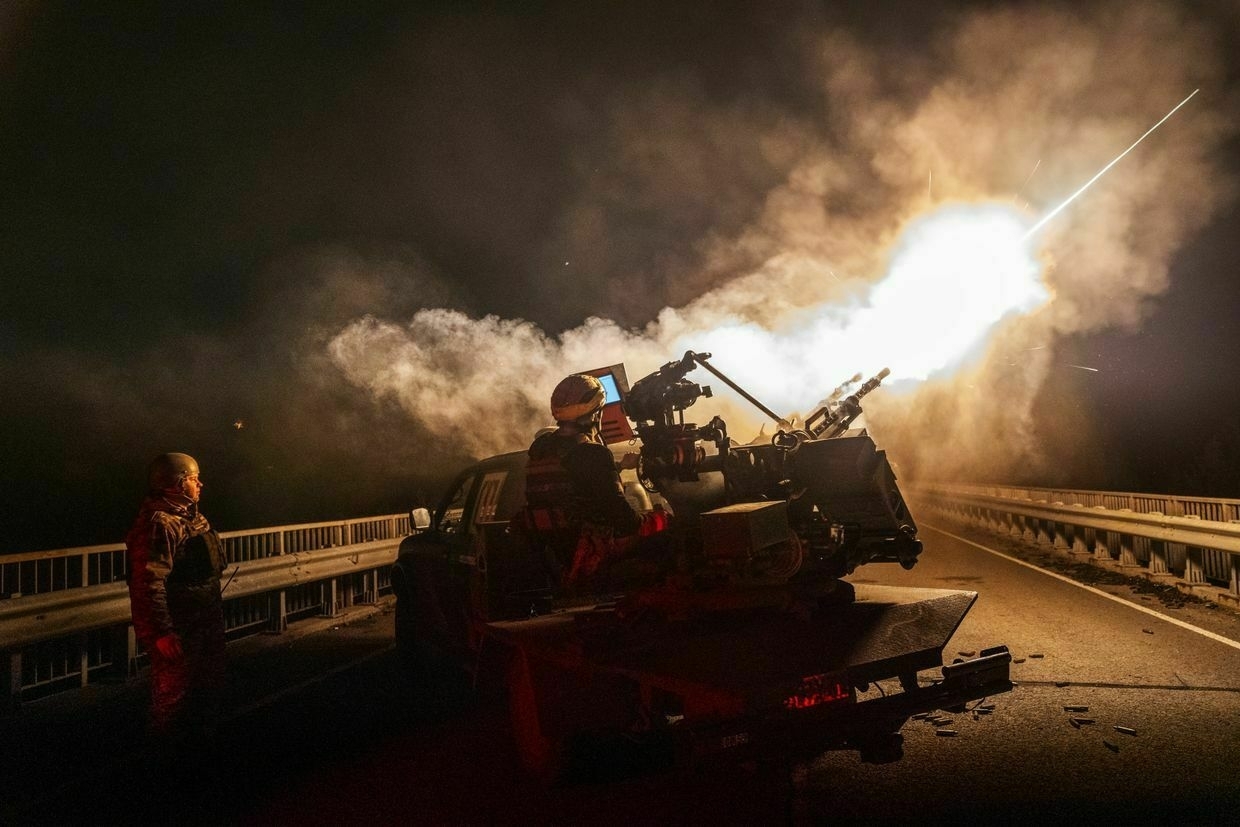
“He (Putin) wants to play games. He wants to see what he can get the Trump administration and the West to give him for free. He wants to try a summer offensive and see if he can grab more territory. He wants to see if his financial situation improves. So, he’s going to play this for a while,” Volker said.
Volker suggested that Putin would agree to a ceasefire later in the fall if the allies succeed in imposing tougher sanctions on Russian gas, oil, and financial transactions, the Kremlin’s financial situation worsens, and a potential summer offensive fizzles.
“And if that’s the case, I think that’s a good thing,” he said.
“Then we must work harder and faster than Russia. We must help Ukraine rebuild its military capabilities, bring people home, strengthen the economy, bring in foreign investment, and accelerate negotiations with the EU,” the diplomat added.
The discussion with Volker occurred on May 9, when Russia celebrated Victory Day, one of the biggest national events, commemorating the Soviet Union’s victory over Nazi Germany in World War II. The annual event is a key part of Putin’s propaganda efforts to justify its aggression against what the Kremlin falsely describes as “Nazis” in Ukraine.
Ahead of the celebrations, the Kremlin announced a 3-day ceasefire, also calling it the beginning of “direct talks” with Ukraine.
Ukraine’s Foreign Minister Andrii Sybiha replied, saying that Kyiv is ready for talks in any format “as soon as it sees that Russia is really ready for a difficult path to peace, and not just for ‘peaceful populism’ or a short-term propaganda ceasefire for the sake of the May 9 parade."
Volker said that he does not believe in the productivity of direct talks with Russia and Ukraine, adding that they can only be effective in limited ways, such as contacts aimed at prisoner exchanges, limited ceasefires in a particular area, and refraining from attacking energy infrastructure on both sides.
“As much as it’s frustrating and worrisome for Ukrainians that it’s the U.S. doing the talking to Russia, I think it’s better than just Russia and Ukraine on their own. I think this puts a set of limits around what Russia can do,” the diplomat said.
More than 100 days have passed since the U.S. administration began efforts to broker peace between Ukraine and Russia, despite U.S. President Trump’s campaign promise to end the war in one day.
Kyiv accepted an unconditional 30-day U.S.-backed ceasefire proposal in March, but Moscow rejected it, demanding a complete end to Western military support for Ukraine.Russia has repeatedly proclaimed its supposed readiness for peace talks while simultaneously pushing for maximalist demands. Kyiv has dismissed these declarations as a propaganda stunt, noting that Russian forces have only intensified their attacks on Ukrainian cities and towns.
Will Trump help Putin escape punishment for his crimes in Ukraine?Under former President Joe Biden, the U.S. took the unprecedented step of deepening cooperation with international courts of law. Washington has never been party to the Rome Statute, the treaty that established the International Criminal Court (ICC), and U.S. policy towards the Hague-based international tribunal has varied widely under different administrations. Now, since President Donald Trump returned to office, that cooperation has stalled. Among his first actions after returning to the O The Kyiv IndependentKateryna Hodunova
The Kyiv IndependentKateryna Hodunova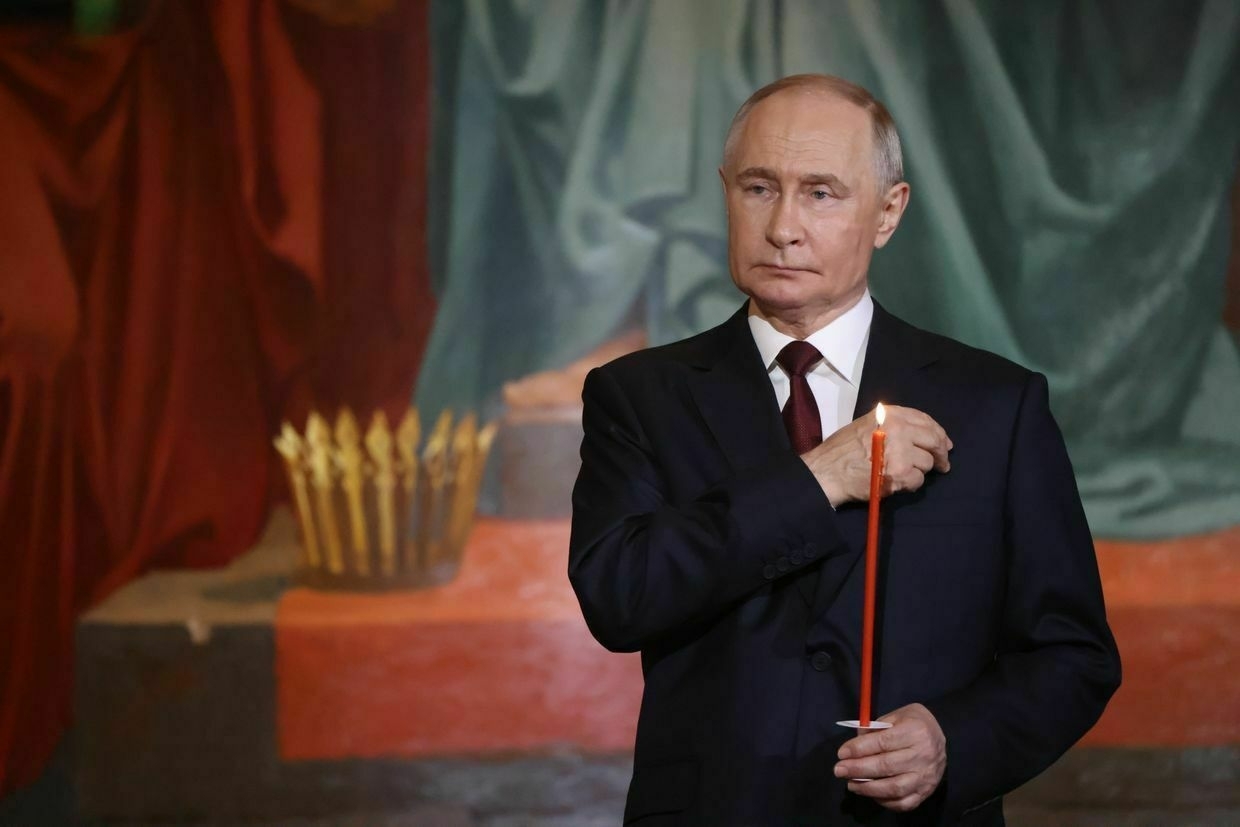
-
Putin draws parallel between Ukraine war and WWII, criticizes Western role during Victory Day parade
During the traditional Victory Day military parade on Moscow's Red Square, Russian President Vladimir Putin has drawn a controversial comparison between the ongoing war against Ukraine and the Soviet Union's fight against Nazi Germany from 1941 to 1945. "Russia remains an insurmountable barrier against Nazism, Russophobia, and anti-Semitism and vows to combat the excesses committed by the followers of these aggressive, destructive ideas," Putin declared from the podium on May 9.
"The truth is on our side," claimed the Kremlin chief amidst the military operations against its neighbor, which has entered its fourth year and is supported entirely by Russia according to Putin.
Emphasizing the role of Soviet soldiers, Putin noted their decisive victory over Nazi Germany in World War II, indirectly contradicting former U.S. President Donald Trump, who had proclaimed May 8 as Victory Day in the United States, emphasizing America's pivotal contribution.
However, Putin acknowledged that after decimating a significant portion of the Wehrmacht, the opening of the "second front in Europe" accelerated victory. He did not explicitly mention France, the United Kingdom, or the United States as past Soviet allies during the 1940s but highlighted China's contribution. Chinese President Xi Jinping stood alongside Putin at the parade as a top foreign guest. Leaders from several former Soviet republics and countries like Laos, Myanmar, Venezuela, and Egypt also participated. Notably absent was Azerbaijani President Ilham Aliyev.
Slovak Prime Minister Robert Fico was the sole head of government from an EU and NATO state present, alongside Serbian President Aleksandar Vučić, with approximately 10,000 troops, including North Koreans, whom Putin thanked for their role in the conflict against Kyiv.
In the audience were also persons identified in investigations tied to alleged war crimes in Ukraine, reported by TV channel "Dozhd" journalists. Among those present was Vladislav Golovin, a marine from the 810th Separate Guards Brigade of the Black Sea Fleet, recognized in 2022 as a Hero of Russia, whose brigade has been implicated in alleged war crimes in Ukraine, including execution of prisoners and prohibited substance use, notably in Mariupol.
Also present was Akhra Avidzba, commander of the so-called "Pyatnashka" brigade, accused in Ukraine of severe crimes such as looting, abductions, torture of POWs, and illegal activities in Donetsk.
-
Ukrainian regions endure attacks despite Putin's ceasefire declaration
Several regional authorities in Ukraine have reported continued Russian strikes and attacks on the night of Thursday, May 9, despite the three-day "ceasefire" announced by Russian President Vladimir Putin. The head of the Dnipropetrovsk Military Administration, Serhiy Lysak, stated that Russian forces attacked with drones and shelled the Nikopol, Pokrovska, Krasnohorivka, Mirova, and Marhanets communities. An 83-year-old local resident was injured, and two private homes were damaged.
In Kharkiv, regional officials reported that two settlements were shelled in the last 24 hours, injuring an 11-year-old boy. Kharkiv Military Administration head Oleh Syniehubov claimed that four Russian attacks were repelled near the city of Vovchansk.
In the Kherson region, according to local administration reports, 17 settlements were affected by artillery and air strikes. Four houses were damaged, and one person was killed. In Kherson, a 60-year-old resident was severely injured in a drone attack and hospitalized. In the Zaporizhzhia region, a local woman was also killed due to shelling.
Ukraine’s General Staff reported that in the past 24 hours, the Russian army launched one missile and 18 airstrikes on Ukrainian positions and settlements, deployed a missile, dropped 32 bombs, and used 2,659 kamikaze drones.
Meanwhile, the governor of Russia’s Belgorod region, Vyacheslav Gladkov, stated that on the morning of May 9, a Ukrainian drone struck the regional government building. Video footage released by Gladkov shows debris near the government building on Cathedral Square in Belgorod.
The "ceasefire," declared by Putin in honor of Victory Day, is set to last three days, from midnight Moscow time on May 8 to midnight on May 11. Ukraine previously reported continued Russian attacks during the first night of the ceasefire. Ukrainian President Volodymyr Zelensky has already indicated that Kyiv does not accept short-term ceasefires, proposing instead a minimum 30-day cessation of hostilities.
-
Russian regime’s legitimacy rests on the manipulation of history
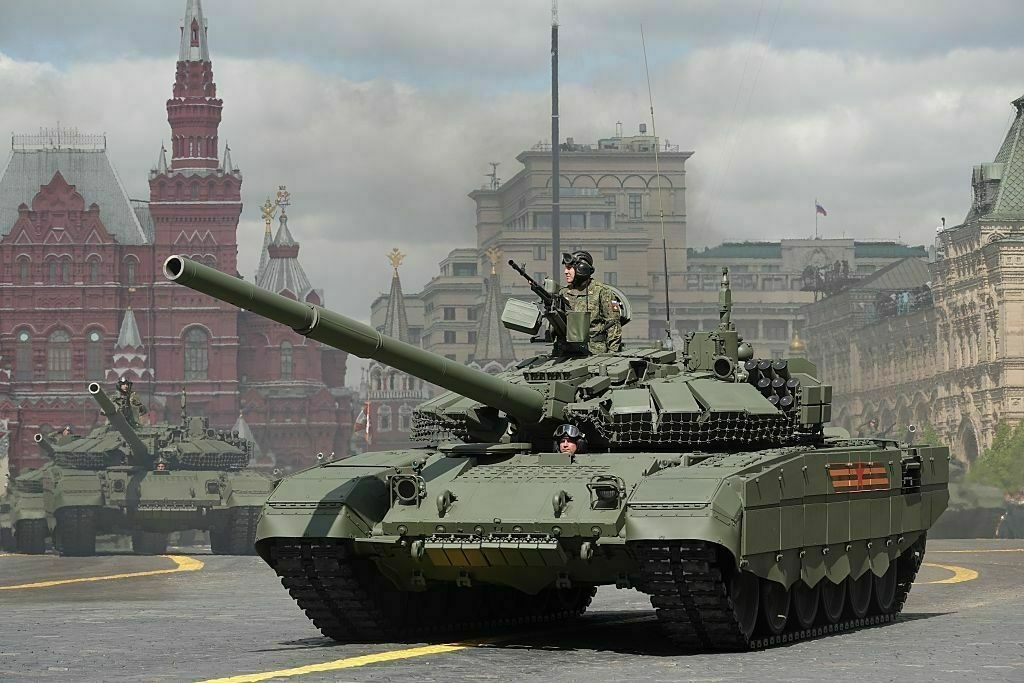
World War II was a bloodbath of unspeakable proportions, planned and executed by totalitarian powers. It brought the catastrophe of the Holocaust. It also led to the division of Europe and loss of freedom of many nations in Europe, including my own.
Today, at the time of commemoration of 80 years since the end of World War II, Russia is singularly responsible for launching the most devastating war in Europe since 1945. Three years into the full-scale war, Russia has failed to achieve its war aims in Ukraine, and Russian President Vladimir Putin has close to 1 million Russian soldiers killed or wounded to show for it.
On May 9, Putin will attempt to conjure up “victory” by throwing a grotesque military parade in the Red Square. The myth of victory and the manipulation of history have long been a cornerstone of the legitimacy of Putin’s regime. They are also used today to justify any sacrifice, including Russia’s losses since 2022.
Yet, Russia will never succeed in monopolising the suffering or victory over Nazism.
Ukraine is sending the war back to Russia — just in time for Victory DayOver the past days, Moscow’s grand avenues, like every year in early May, were taken over by the growling of 80-year-old tanks and the smell of gasoline burned by military vehicles. To the delight of many locals, soldiers marched in multiple rehearsals for the May 9 Victory Day Parade in the week leading up to the actual event. But as Moscow prepares for its fourth parade since the start of Russia’s full-scale invasion of Ukraine, the atmosphere this year is different. At the turn of the mont The Kyiv IndependentKarol Luczka
The Kyiv IndependentKarol Luczka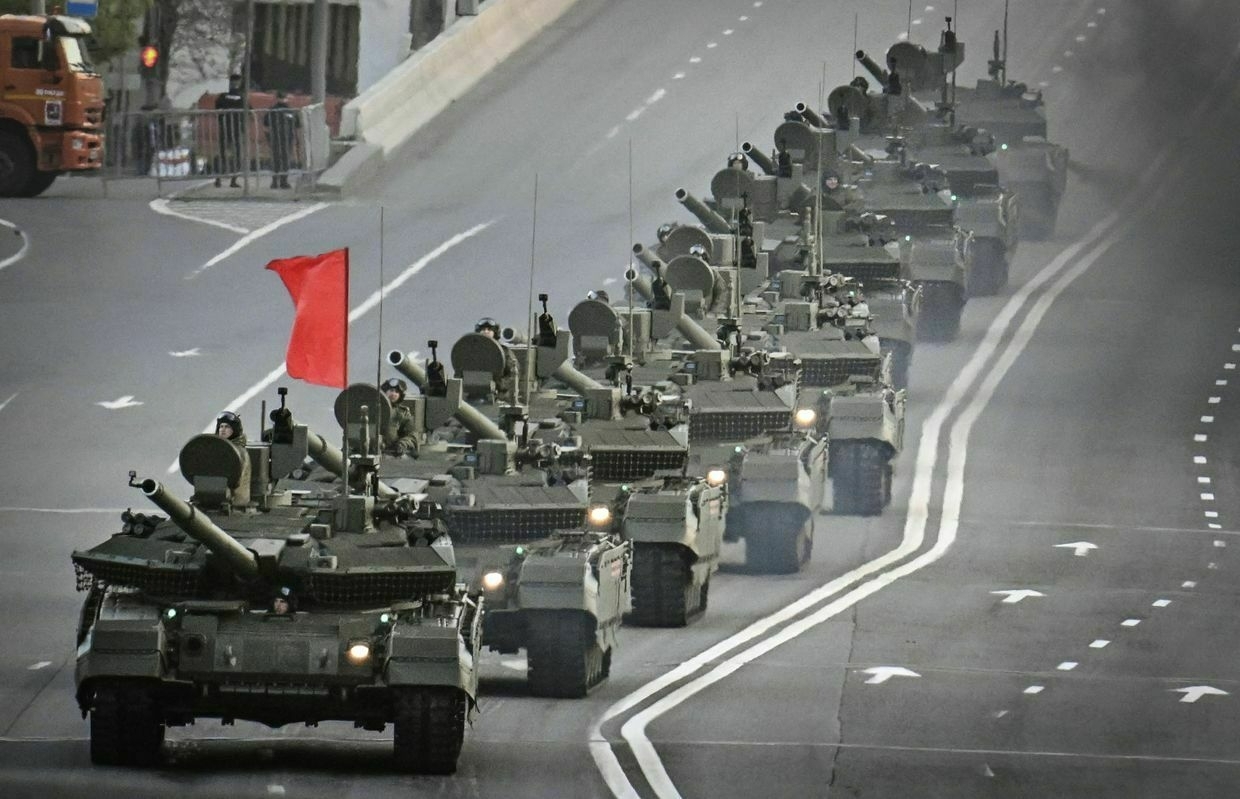
Ukrainians, Belarusians, Georgians, Kazakhs, and many others, were all fighting side by side. More than 6 million Ukrainians alone fought in the Red Army. From the liberation of Auschwitz to the iconic flag-raising over the Reichstag in Berlin and the signing of Japan’s surrender, Ukrainian soldiers and officers shaped the course of World War II.
Ukrainians both made an extraordinary contribution to the victory and paid the greatest price for it. At least 8 million Ukrainians were killed out of the population of 41 million. Similarly, Belarus became the geographical center of the confrontation between Nazi Germany and the Soviet Union. More than 2 million people were killed on the territory of Belarus, and approximately half of the population of the country was either killed or displaced by the end of the war.
The Russian regime has spent decades and billions of euros to silence the contributions of other peoples to the victory over Nazism, while at the same time whitewashing the Soviet regime’s responsibility for starting the war and its devastating aftermath.
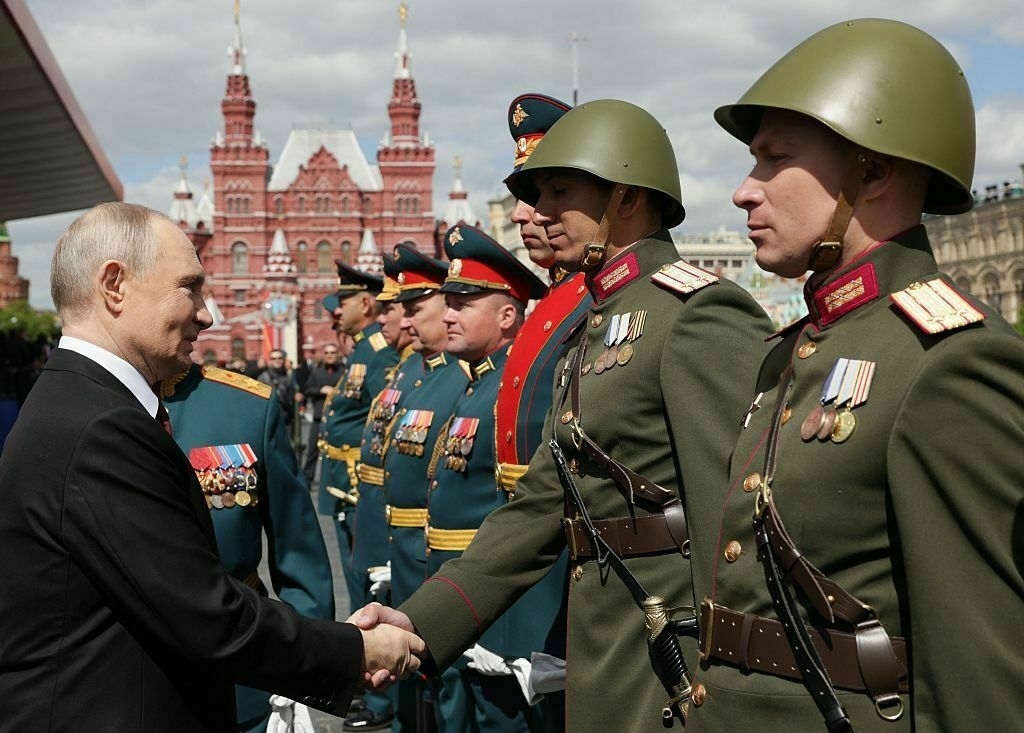
Russia’s President Vladimir Putin greets military commanders after the Victory Day military parade at Red Square in central Moscow on May 9, 2025. (Gavriil Grigorov/POOL/AFP via Getty Images) Today’s central Russian propaganda narrative focuses on the “root causes” of the war in Ukraine. These are, of course, Russia’s unfulfilled imperial, colonial ambitions.
Russia seeks to restore its sphere of influence and dominate the future of other European countries. Putin is already playing the part at home, where he is rehabilitating the “monsters of the past” — Stalin, GULAGs, political prisoners in the thousands.
We know from our experience why achieving Russia’s accountability for the war in Ukraine is crucial for peace and security.
The Baltic states, Poland, and Ukraine are among the countries that have historically suffered most from imperial spheres of influence. World War II began after the Soviet Union and Nazi Germany signed the Nazi-Soviet Pact and secret protocols to it and agreed to the partition of Poland and the occupation of Baltic states in August 1939.
The two totalitarian powers executed their agreement by jointly invading Poland in September 1939. For Latvia, this historical juncture resulted in 50 years of brutal occupation, mass deportations, forced Russification — many of the crimes seen in the occupied territories of Ukraine today.
Crucially, while Nazi crimes have been thoroughly documented, condemned, investigated, and prosecuted — neither the Soviet nor the Russian authorities have ever faced international accountability for crimes during or after World War II.
We see the consequences of this lack of accountability today. Impunity breeds future generations of war criminals, rapists, and murderers. Many of those will be marching on the Red Square on May 9, leaving a bloody trail from their atrocities in Bucha, Irpin, Mariupol, and many other Ukrainian cities.
Today, we must learn the lessons of World War II and apply them with urgency in support of Ukraine’s fight for freedom. Spheres of influence enable aggression. Accountability is not optional, which is why the work on establishing the special tribunal on Russia’s crime of aggression against Ukraine must be finalised as soon as possible.
On May 9, we will celebrate Europe day together with our Ukrainian friends for a reason. Ukraine is Europe. Ukraine will become part of the European Union, and there is nothing Putin can do to stop it.
‘The front is noisy’ — for Ukraine’s soldiers, Russia’s Victory Day ‘ceasefire’ is yet another shamMoscow’s self-declared truce which came into force at midnight on May 8 is not being felt on the front lines, Ukrainian soldiers have told the Kyiv Independent, reporting numerous cases of Russian military activity throughout the day. “There is no truce. There is shelling, artillery, drone and FPV (bomb) drops,” Petro Kuzyk, a battalion commander at the National Guard, said. The Kremlin announced the measure on April 28, claiming all military actions would halt on May 8 to midnight on May 11 t The Kyiv IndependentChris York,
The Kyiv IndependentChris York,
-
Hungary allegedly expels two 'spies' working under diplomatic cover at Ukraine's embassy, Hungarian FM says

Hungary has allegedly expelled two “spies” working under diplomatic cover at Ukraine’s embassy in Budapest, Hungarian Foreign Minister Peter Szijjarto said on May 9 on Facebook.
Szijjarto’s announcement came after Ukraine’s Security Service (SBU) allegedly dismantled a Hungarian military intelligence network operating in Zakarpattia Oblast, detaining two agents accused of espionage against the Ukrainian state.
The operation’s objectives reportedly included gathering intelligence on military defenses, identifying vulnerabilities in its ground and air defense systems, and assessing local residents' socio-political views, particularly scenarios of public reaction if Hungarian troops entered the region.
Szijjarto reacted to Kyiv’s move, calling it “anti-Hungarian propaganda."
“The latest smear campaign against Hungarians is being launched for exactly the same reason as the previous ones. We Hungarians want peace, we say no to war, we have never supplied weapons to Ukraine, and we never will, and we have not allowed and will not allow ourselves to be dragged into this war, to drag Hungary into this war,” Szijjarto said.
Szijjarto added that the Hungarian government will not tolerate “the constant launching of such defamatory actions against Hungary and the Hungarian people in Ukraine,” as a reason for expelling the alleged “spies."
“We have handed over the decision and the note to this effect to the Ukrainian Ambassador in Budapest here at the Ministry of Foreign Affairs in the last few minutes,” the minister said.
Ukraine has not yet responded to Hungary’s statement. The Kyiv Independent cannot immediately verify Szijjarto’s claims.
Hungary maintains positive relations with Russia in contrast with other EU members. On March 26, Szijjarto visited Moscow to discuss continued economic cooperation between the two countries.
Hungary has also repeatedly opposed EU sanctions on Russia and opposed EU aid for Ukraine.
‘Not all Hungarians are Orban,’ say Ukrainians living in EU’s most pro-Russian countryEvery time Daryna Koryagina enters her Budapest flat rented to her by a Hungarian friend, she sees the same sticker on a wardrobe inside the entrance. “Sorry about our prime minister,” it reads. The 33-year-old refugee and PhD student is one of tens of thousands of Ukrainians who fled Russia’s full-scale invasion and chose to live in what many might consider a strange choice — Hungary, the EU’s most pro-Russian, anti-Ukraine country. “It was a bad idea to go on Tinder dates with Hungarians,” The Kyiv IndependentYuliia Taradiuk
The Kyiv IndependentYuliia Taradiuk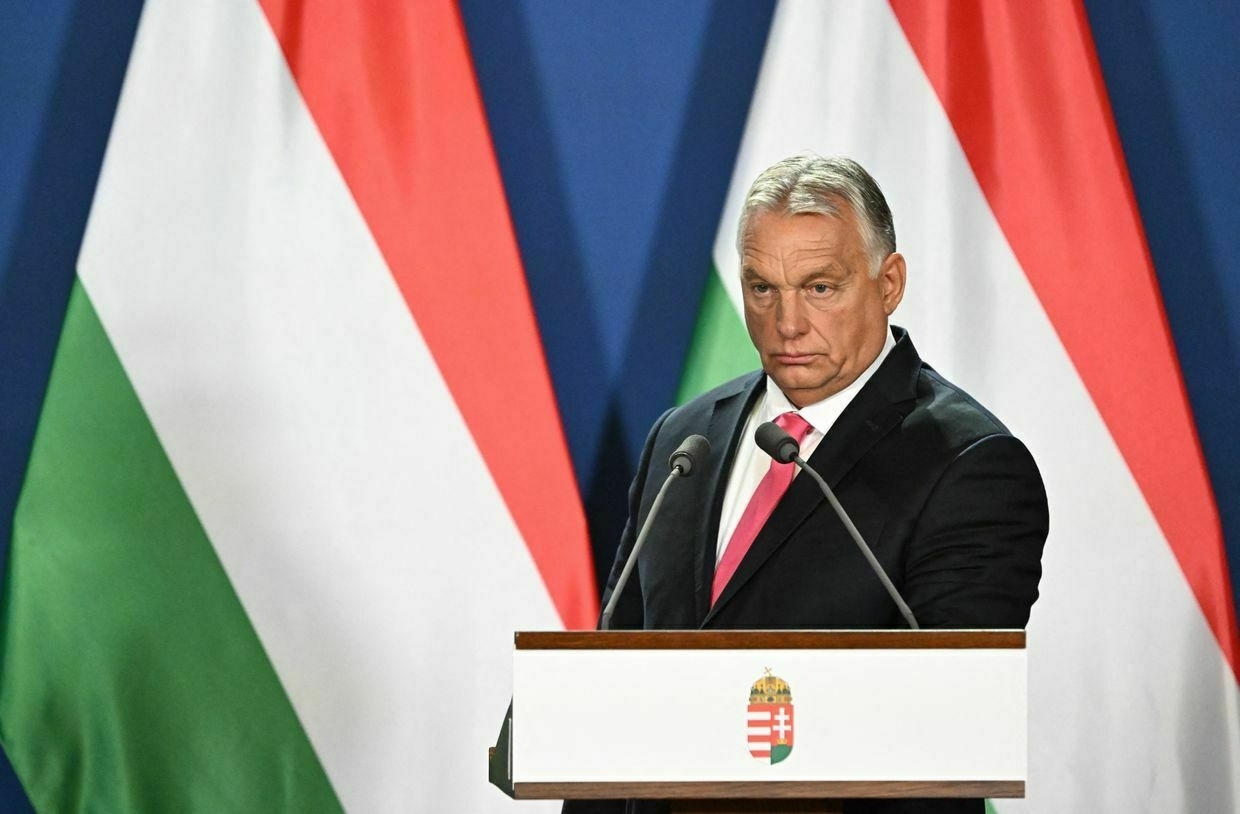
-
European ministers approve special tribunal to prosecute Russia's aggression against Ukraine
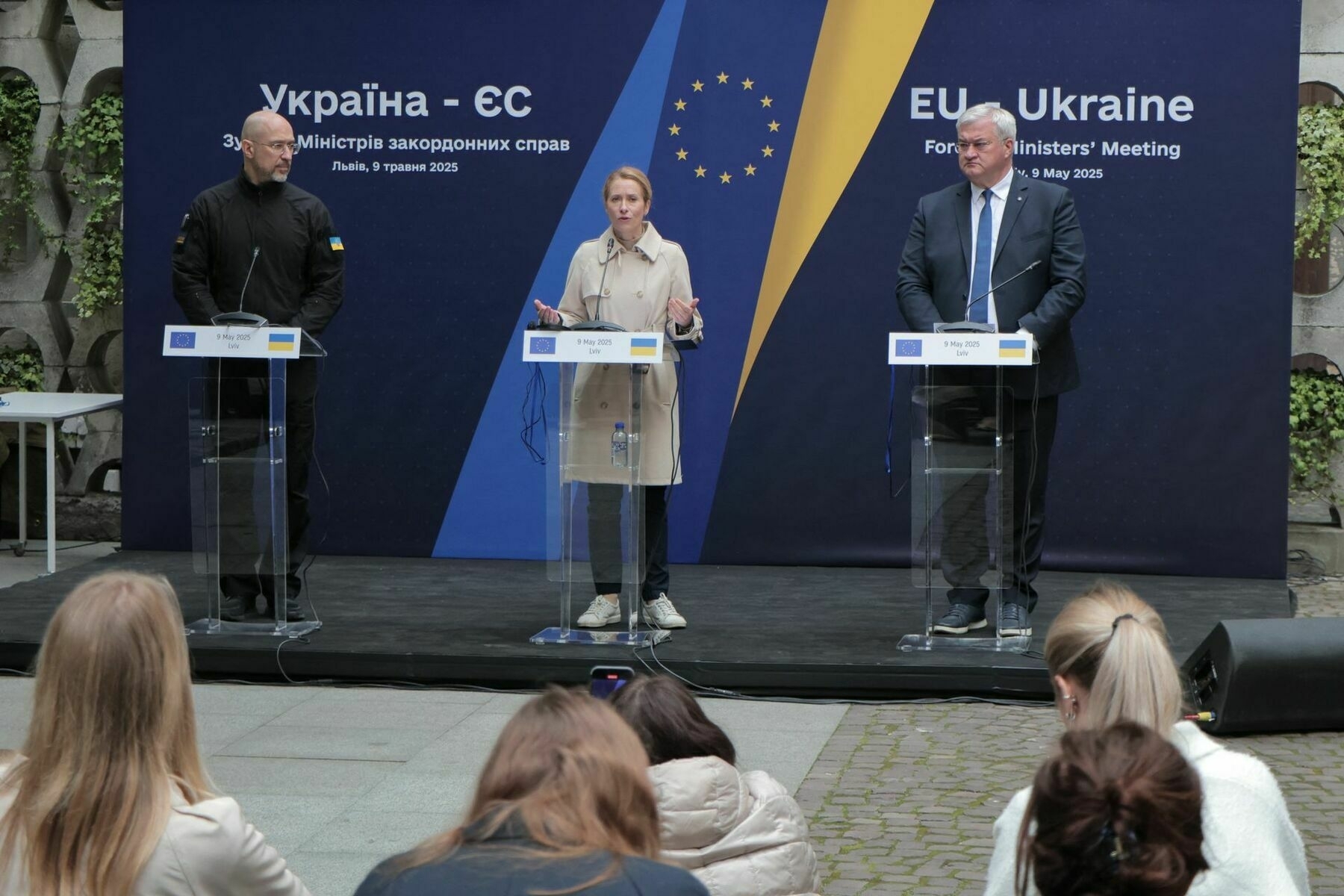
European foreign ministers approved the creation of a special tribunal for the crime of aggression against Ukraine during a meeting in Lviv on May 9.
The tribunal, which will operate under the auspices of the Council of Europe, aims to prosecute Russia’s top political and military leadership, including President Vladimir Putin.
The approval marks a key step in international efforts to hold Moscow accountable for what is considered the gravest violation of international law committed against Ukraine.
In a joint statement, coalition representatives welcomed the completion of technical work on the legal instruments necessary to establish the tribunal.
They cited the UN General Assembly resolutions on aggression against Ukraine and the Vienna-Riga Statement of Nov. 22, 2024, as the foundation for the tribunal’s mandate.
The coalition reaffirmed its commitment to launching the tribunal’s work as soon as possible and called on additional states and international organizations to join and support the tribunal’s activities.
The next formal step will be at the Council of Europe’s Committee of Ministers meeting in Luxembourg on May 13–14.
The statement was endorsed in the presence of EU foreign policy chief, Kaja Kallas, and Council of Europe Commissioner for Democracy, Justice and Rule of Law Michael McGrath.
Delegations from 35 countries and the Council of Europe gathered in Lviv on May 9. The visit coincided with Russia’s Victory Day parade in Moscow, an annual event the Kremlin uses to showcase military might and justify its war against Ukraine.
President Volodymyr Zelensky has long advocated for the tribunal to ensure that Putin and other senior Russian officials face justice for launching the invasion nearly three years ago.
Ukrainian authorities have documented thousands of war crimes, including deliberate strikes on civilians, cultural heritage sites, medical facilities, as well as torture and forced deportations.
The International Criminal Court (ICC) has already issued arrest warrants for Putin and Maria Lvova-Belova, the Russian official overseeing the forced deportation of Ukrainian children to Russia.
Unlike other international charges such as war crimes or crimes against humanity, the crime of aggression targets only the top leadership responsible for planning and waging a war.
EU diplomats honor fallen soldiers in Lviv, pledge more Ukraine supportDelegations from 35 countries and the Council of Europe gathered in Lviv as EU officials prepare to approve both new defense aid and steps toward establishing a tribunal for Russian leadership. The Kyiv IndependentTim Zadorozhnyy
The Kyiv IndependentTim Zadorozhnyy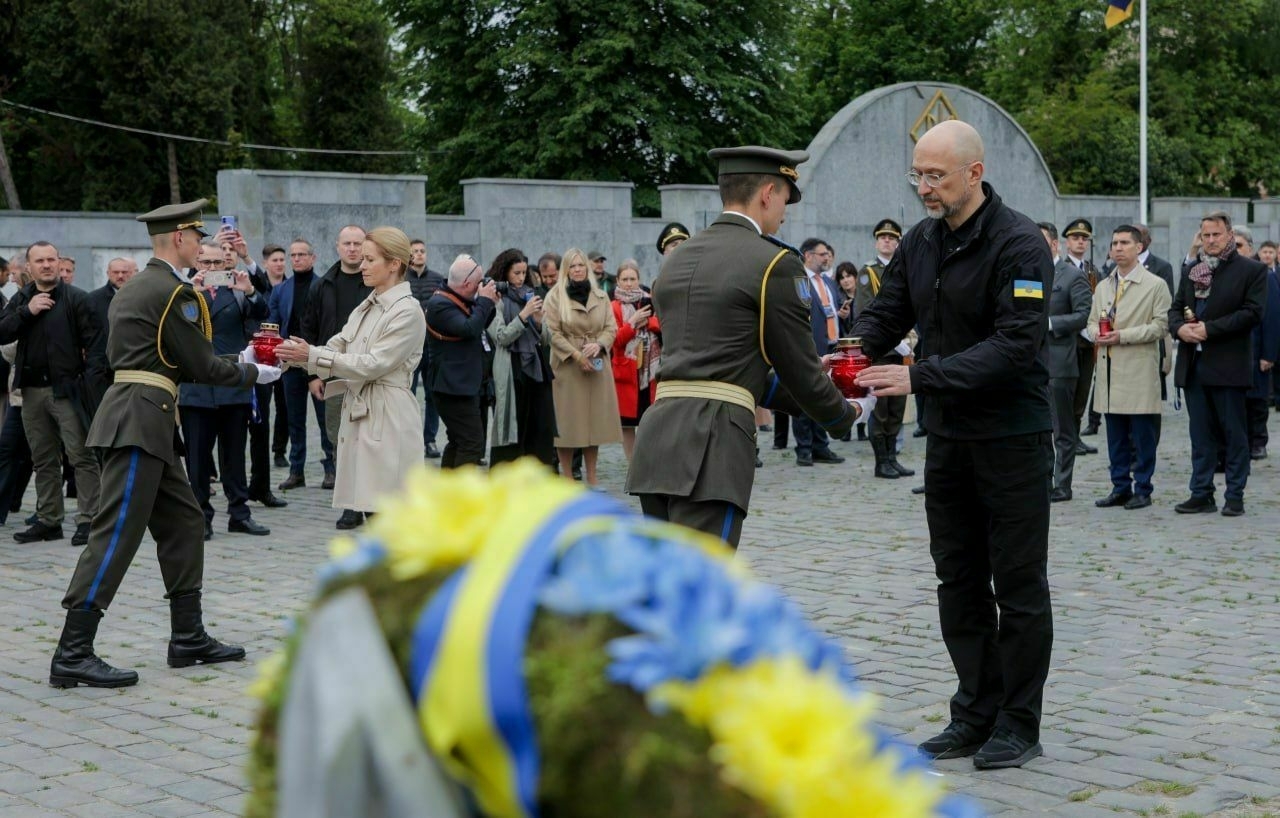
-
2 killed, 12 injured in Russian attacks on Ukraine despite declared 'ceasefire'
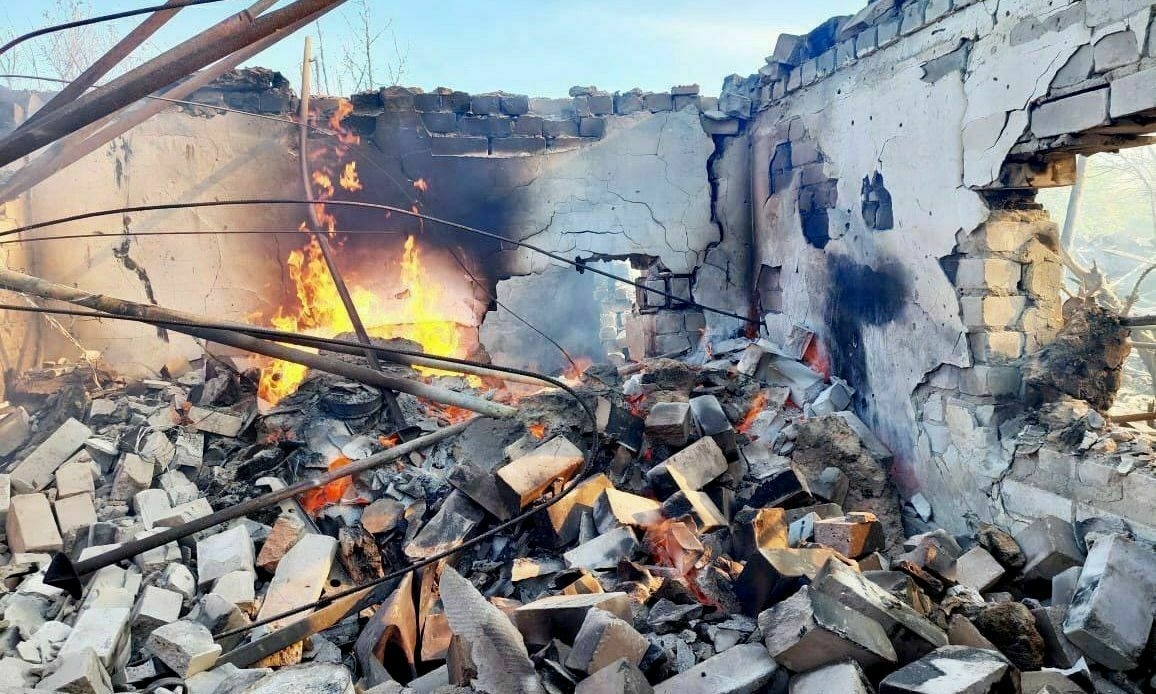
At least two people were killed and 12 injured in Russian attacks across Ukraine over the past day, regional officials reported on May 9, despite Moscow’s announced Victory Day truce.
Although Moscow declared on April 28 that it would halt all military actions from May 8 to midnight on May 11 to mark Victory Day, strikes on civilian areas have continued.
In Kharkiv Oblast, five people were injured in attacks involving FPV drones and artillery, Governor Oleh Syniehubov said.
Russian attacks in Kherson Oblast killed one person and wounded another, Governor Oleksandr Prokudin said. The attacks damaged a residential apartment building and three houses in the region’s settlements.
A woman was killed in a Russian attack in Zaporizhzhia Oblast, while two others were injured in a separate strike involving a first-person-view (FPV) drone, the regional military administration reported.
In Donetsk Oblast, three residents were injured — two in Pokrovsk and one in Kostyantynivka — according to Governor Vadym Filashkin.
An 83-year-old man was wounded in Dnipropetrovsk Oblast, Governor Serhii Lysak reported. Two houses, an outbuilding, and power lines were damaged in the strike.
President Volodymyr Zelensky and Ukrainian officials have repeatedly dismissed Moscow’s unilateral “humanitarian” truce as a ploy to create favorable conditions for Russia’s Victory Day celebrations on May 9.
It followed Russia’s now nearly two-month-long refusal to accept a U.S.-proposed full, 30-day ceasefire to which Ukraine agreed back on March 11.
‘The front is noisy’ — for Ukraine’s soldiers, Russia’s Victory Day ‘ceasefire’ is yet another shamMoscow’s self-declared truce which came into force at midnight on May 8 is not being felt on the front lines, Ukrainian soldiers have told the Kyiv Independent, reporting numerous cases of Russian military activity throughout the day. “There is no truce. There is shelling, artillery, drone and FPV (bomb) drops,” Petro Kuzyk, a battalion commander at the National Guard, said. The Kremlin announced the measure on April 28, claiming all military actions would halt on May 8 to midnight on May 11 t The Kyiv IndependentChris York,
The Kyiv IndependentChris York,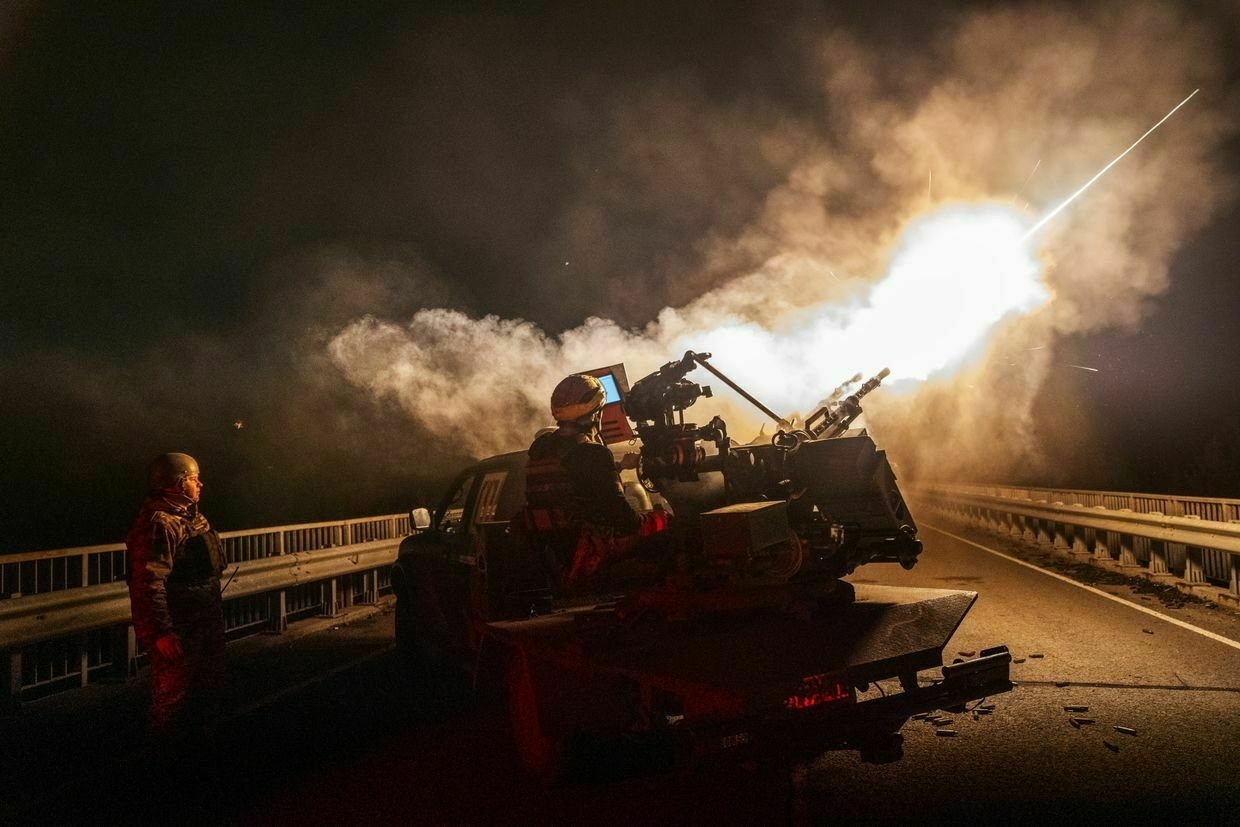
-
Russia erects Stalin monument in occupied Melitopol to mark Victory Day
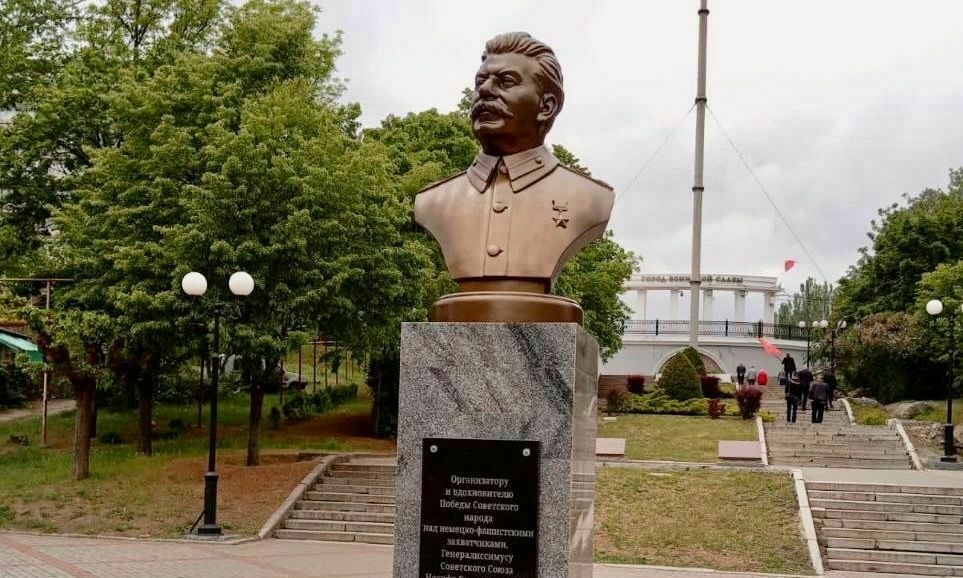
The Communist Party of Russia unveiled a monument to Soviet dictator Joseph Stalin in occupied Melitopol, Zaporizhzhia Oblast, on May 8 to commemorate Victory Day in World War II, the party announced.
The statue carries a plaque that reads: “To the organizer and inspirer of the victory of the Soviet people over the Nazi invaders, Generalissimo of the Soviet Union Joseph Stalin, from grateful descendants."
The ceremony was attended by Russian-installed officials and local school students who laid flowers at the site.
Melitopol has been under Russian occupation since March 2022.
Stalin’s legacy in Ukraine is marked by profound suffering. Under his rule, millions of Ukrainians died during the Holodomor, a man-made famine in 1932–1933.
The dictator also oversaw mass deportations, purges of Ukrainian intellectuals and leaders, and the suppression of the Ukrainian language and culture.
While some in Russia credit Stalin for leading the Soviet Union to victory in World War II, portraying him solely as a military hero ignores the brutal policies and immense human cost of his regime.
The monument comes amid a broader revival of Stalin’s cult in Russia.
On April 29, Russian President Vladimir Putin signed a decree renaming Volgograd’s international airport to “Stalingrad.” Days earlier, Russian media reported that Putin had endorsed the renaming of Volgograd’s Gumrak airport to honor the dictator.
‘The front is noisy’ — for Ukraine’s soldiers, Russia’s Victory Day ‘ceasefire’ is yet another shamMoscow’s self-declared truce which came into force at midnight on May 8 is not being felt on the front lines, Ukrainian soldiers have told the Kyiv Independent, reporting numerous cases of Russian military activity throughout the day. “There is no truce. There is shelling, artillery, drone and FPV (bomb) drops,” Petro Kuzyk, a battalion commander at the National Guard, said. The Kremlin announced the measure on April 28, claiming all military actions would halt on May 8 to midnight on May 11 t The Kyiv IndependentChris York,
The Kyiv IndependentChris York,
-
Drones undermine Putin's image! It's loud near Moscow - the aggressor is getting what he deserves
Tracking information about the Russian War against Ukraine
